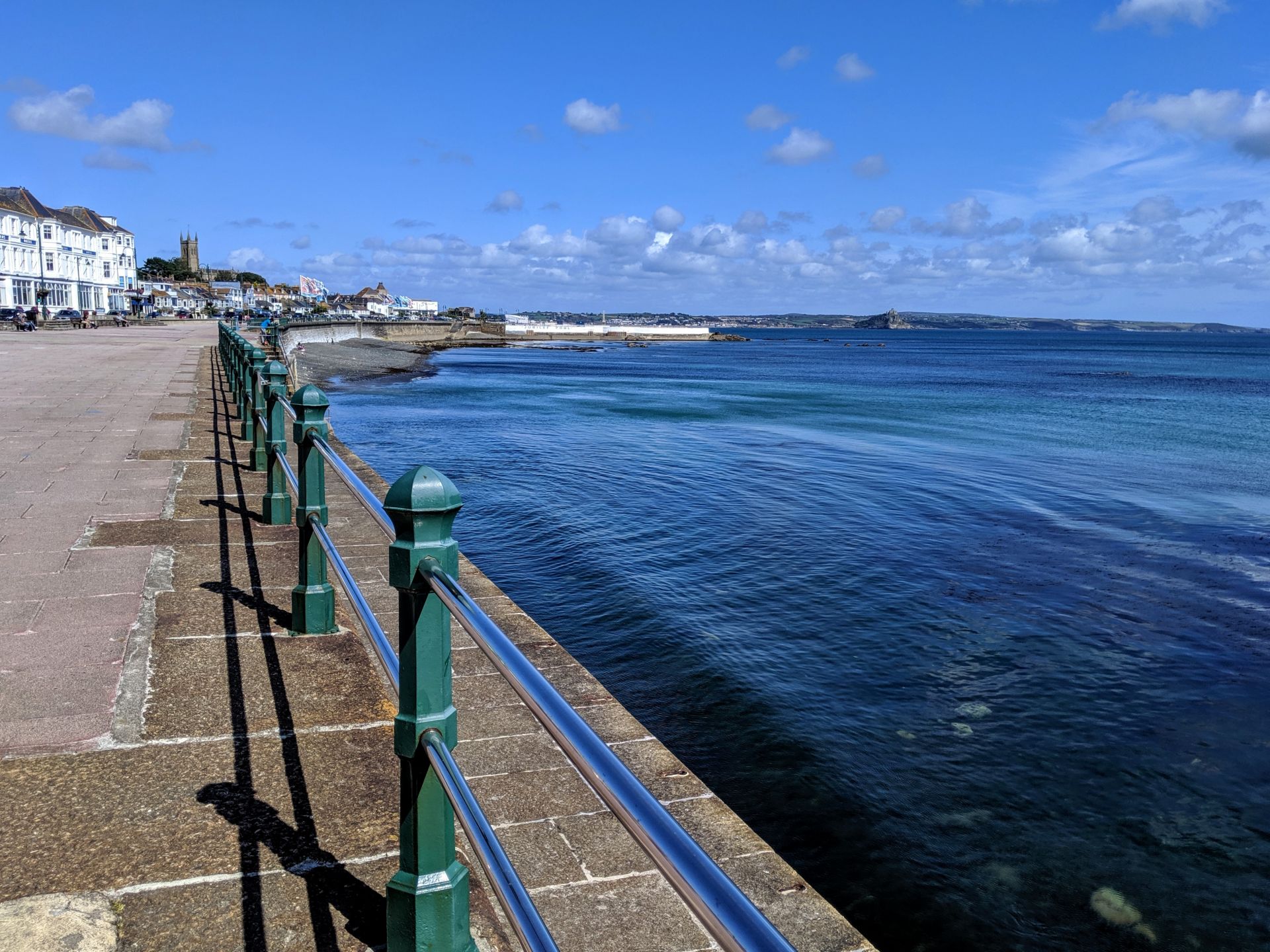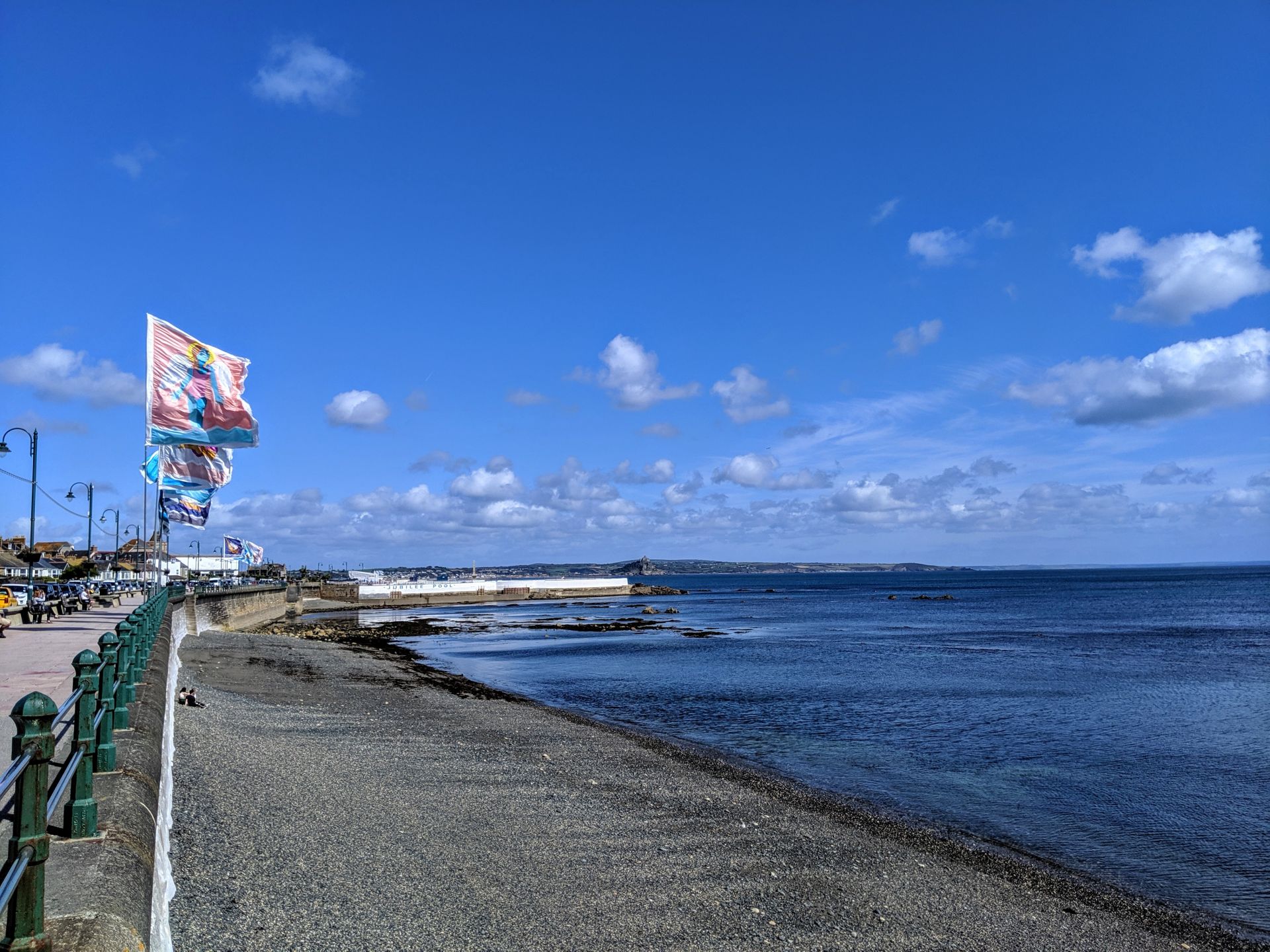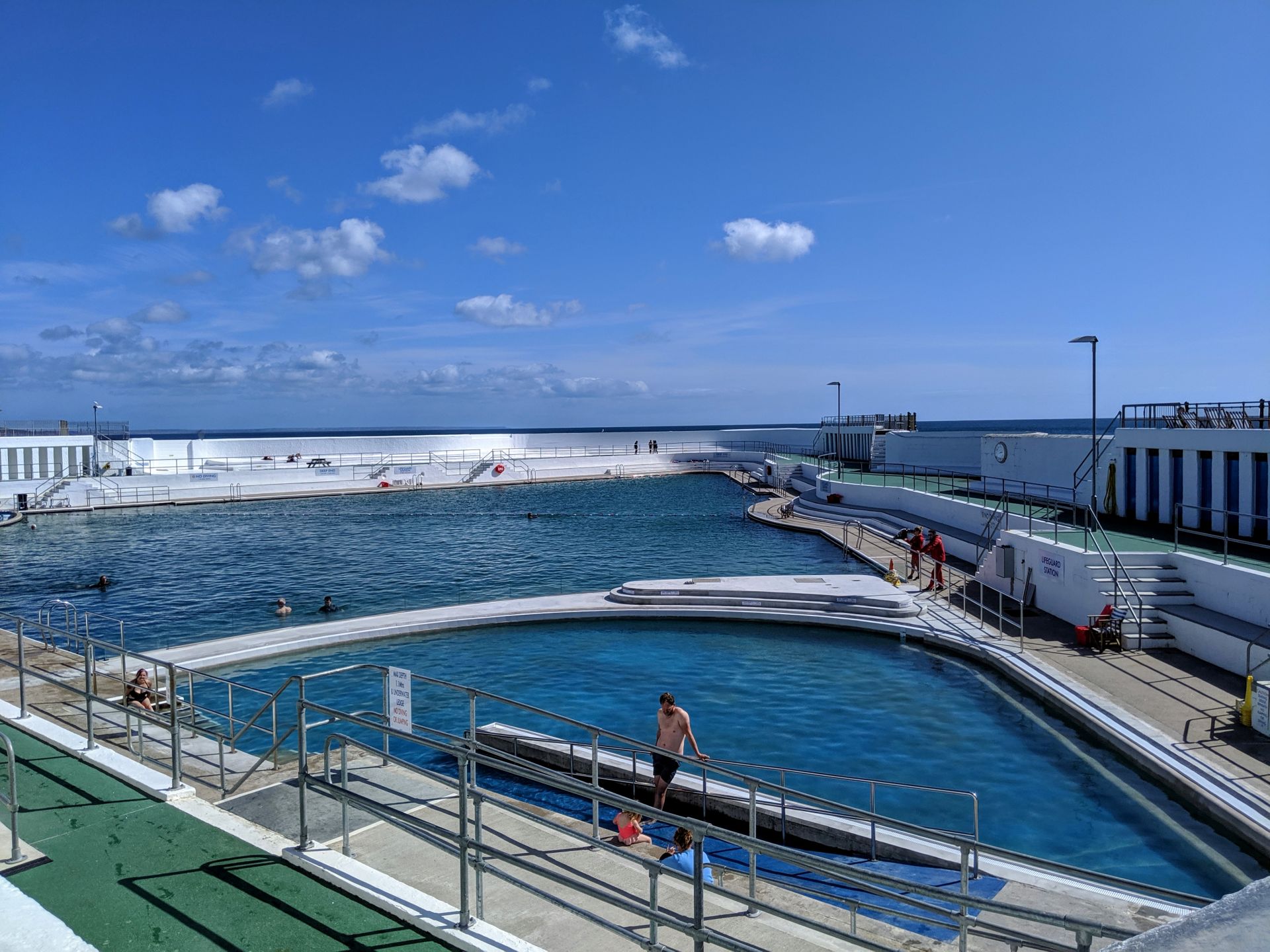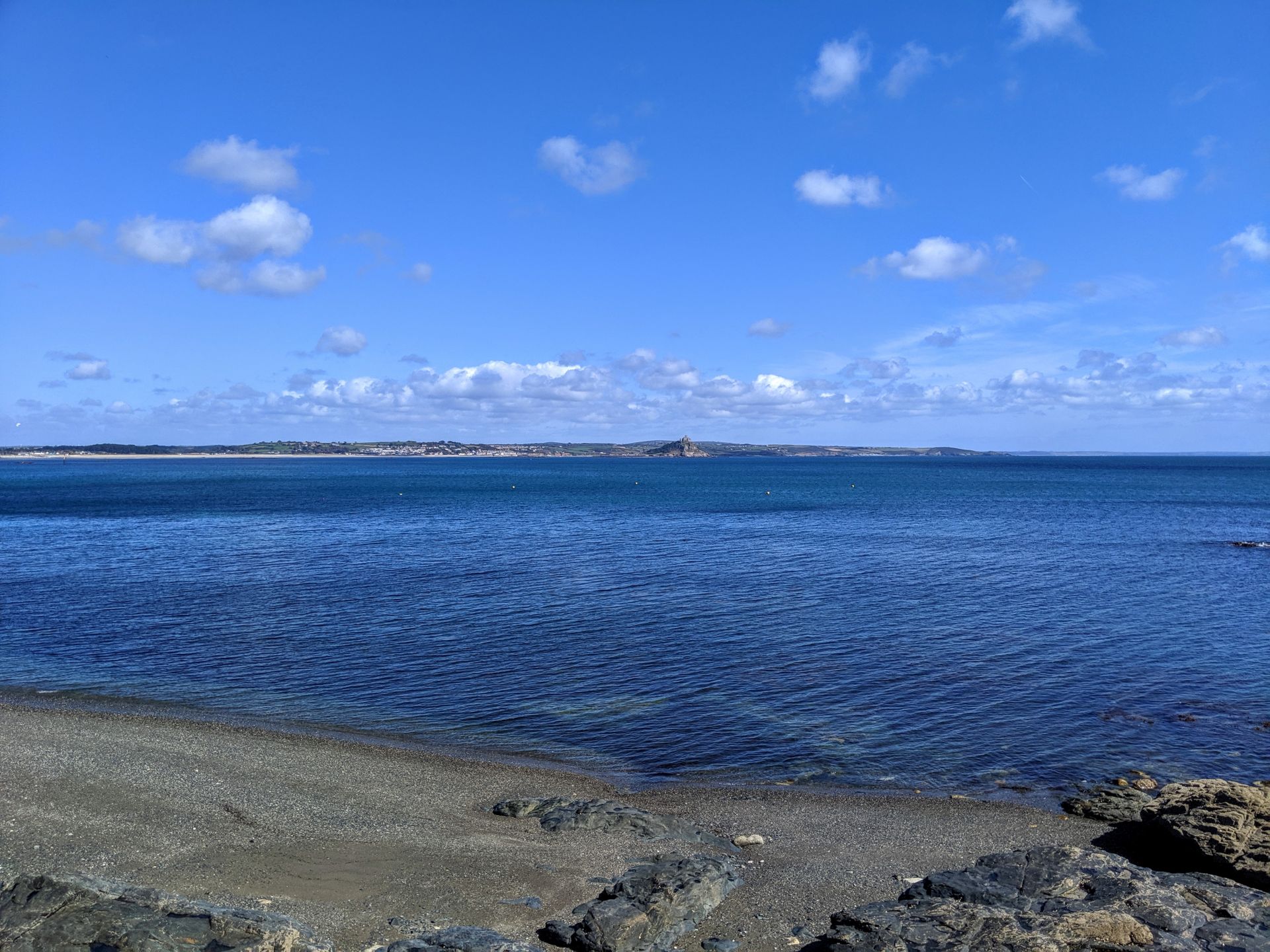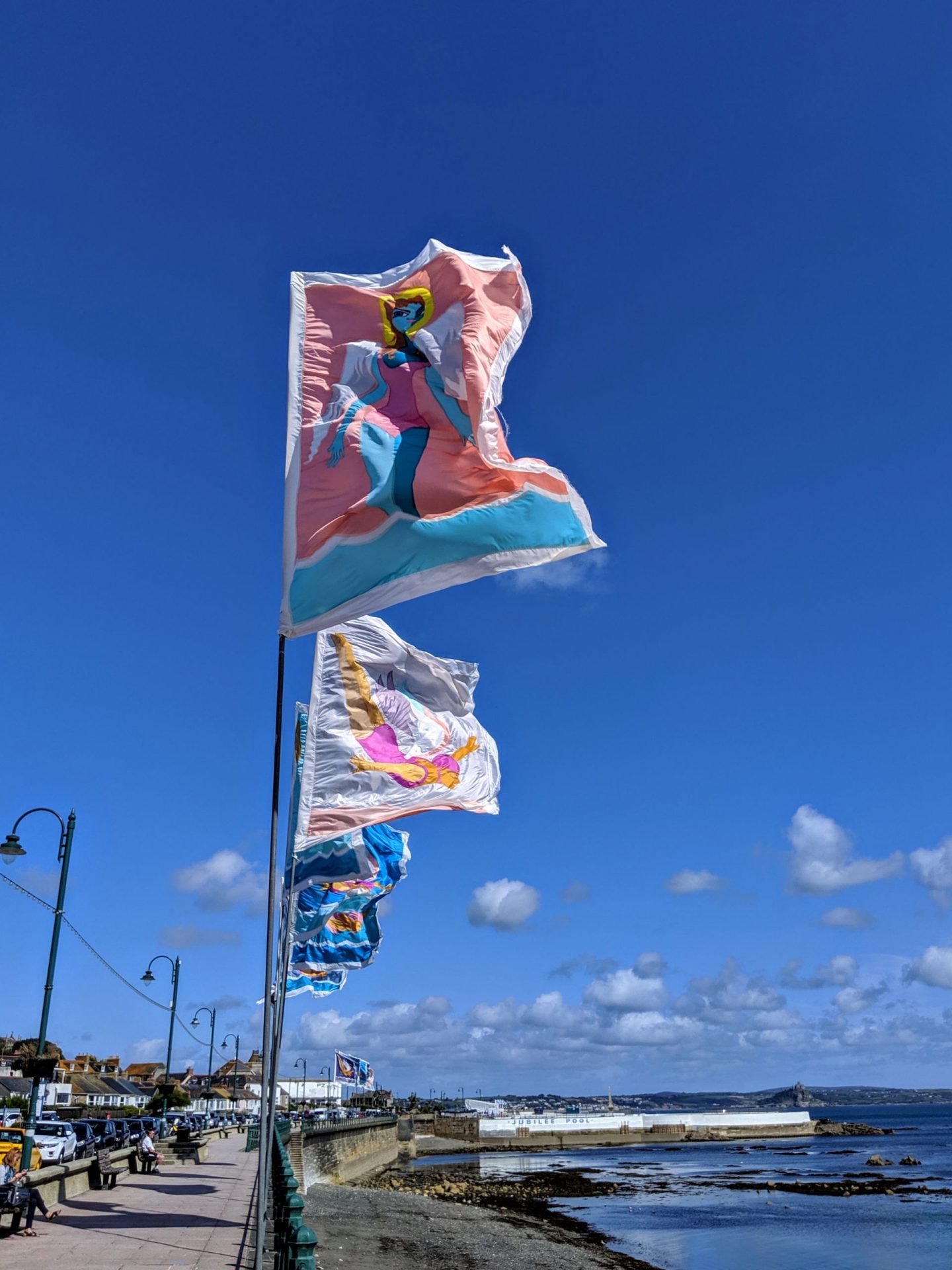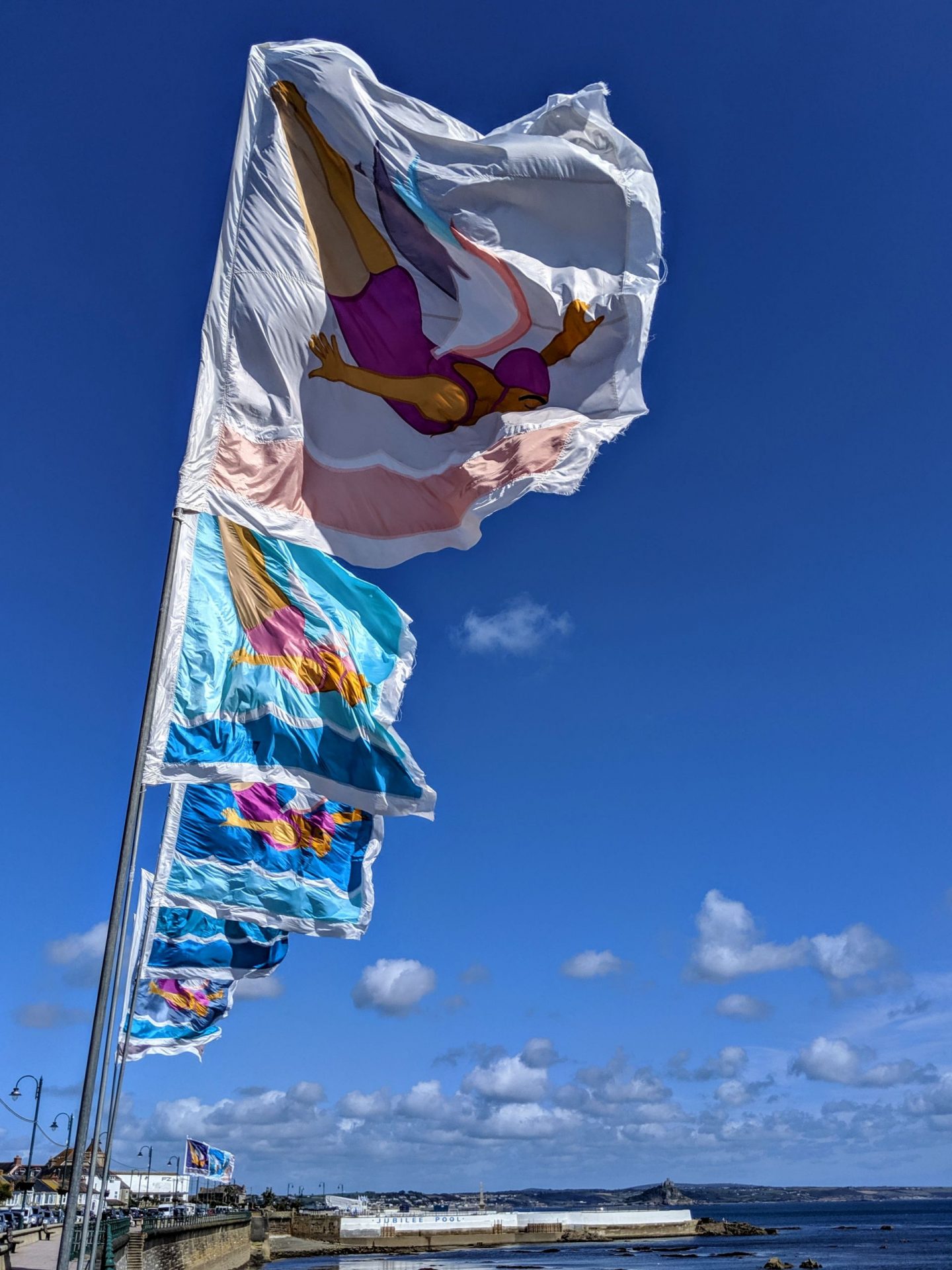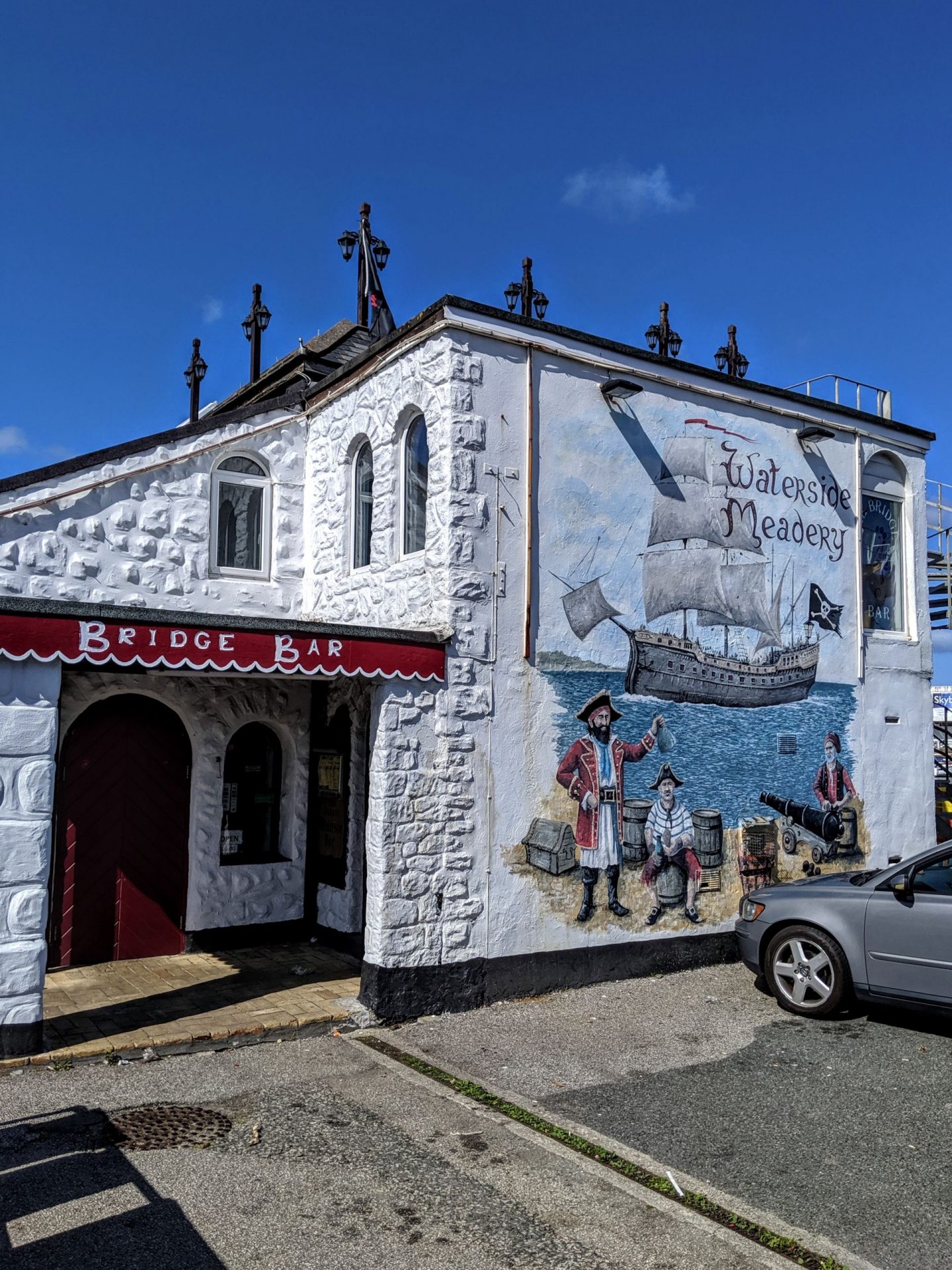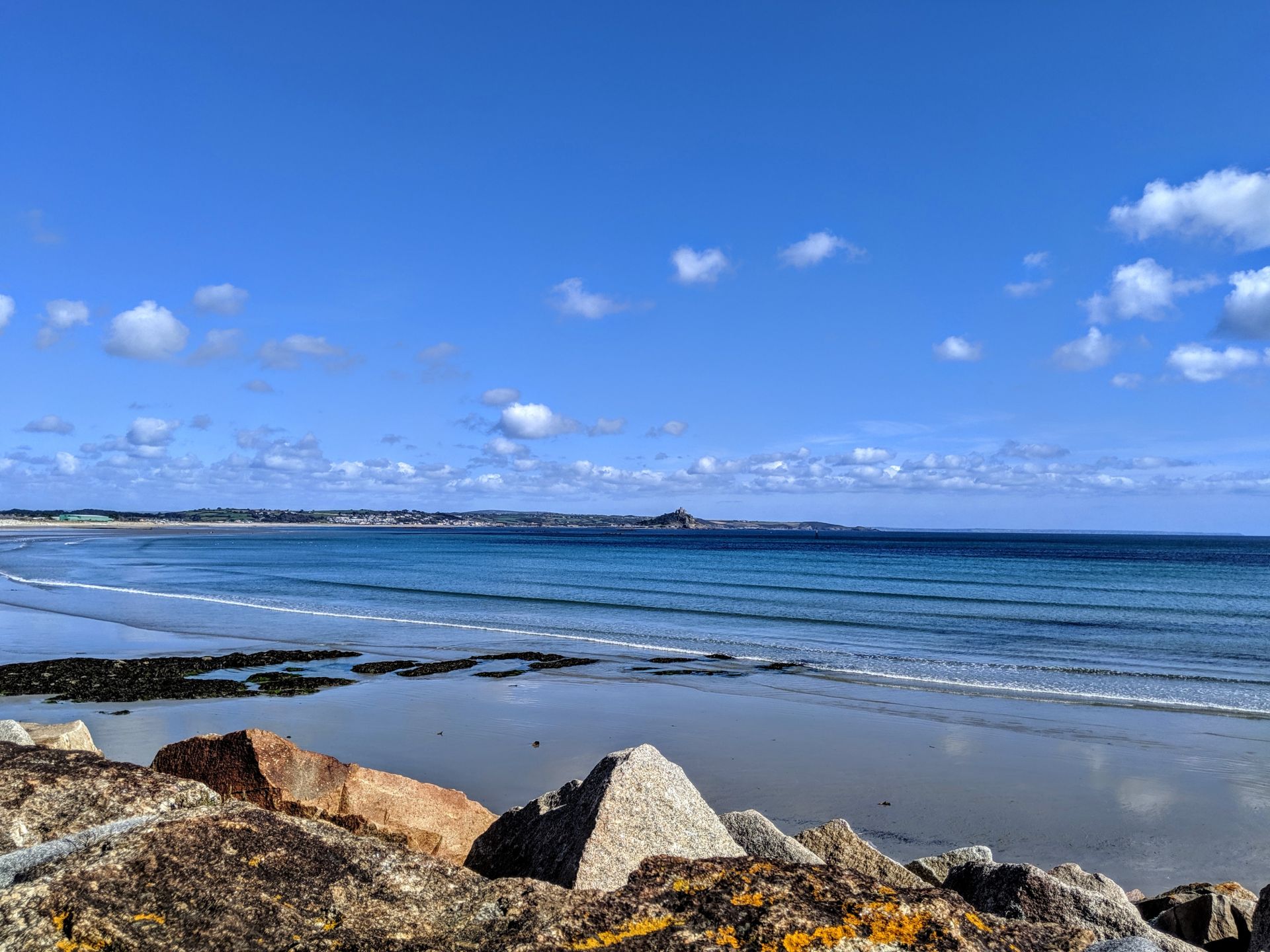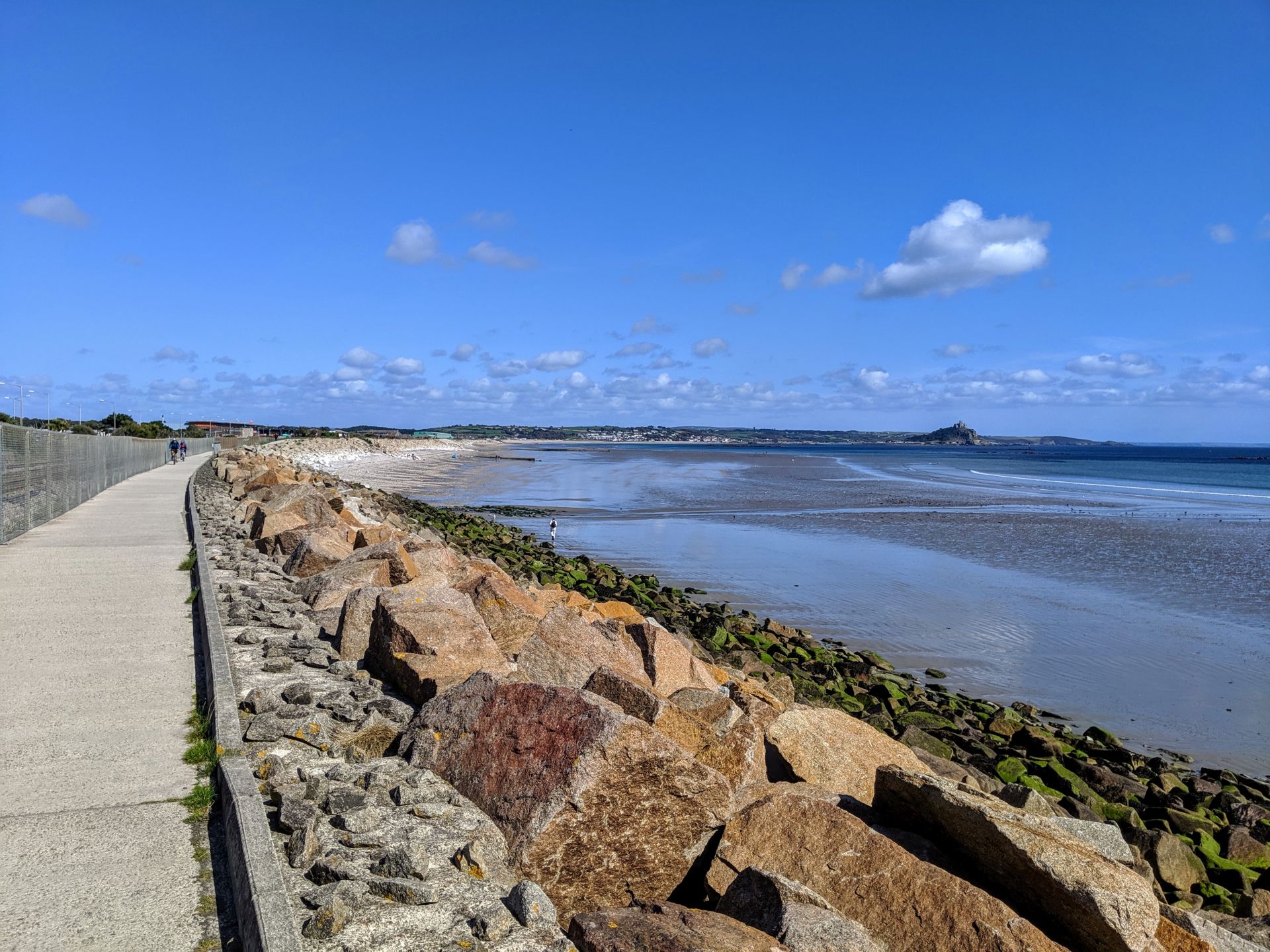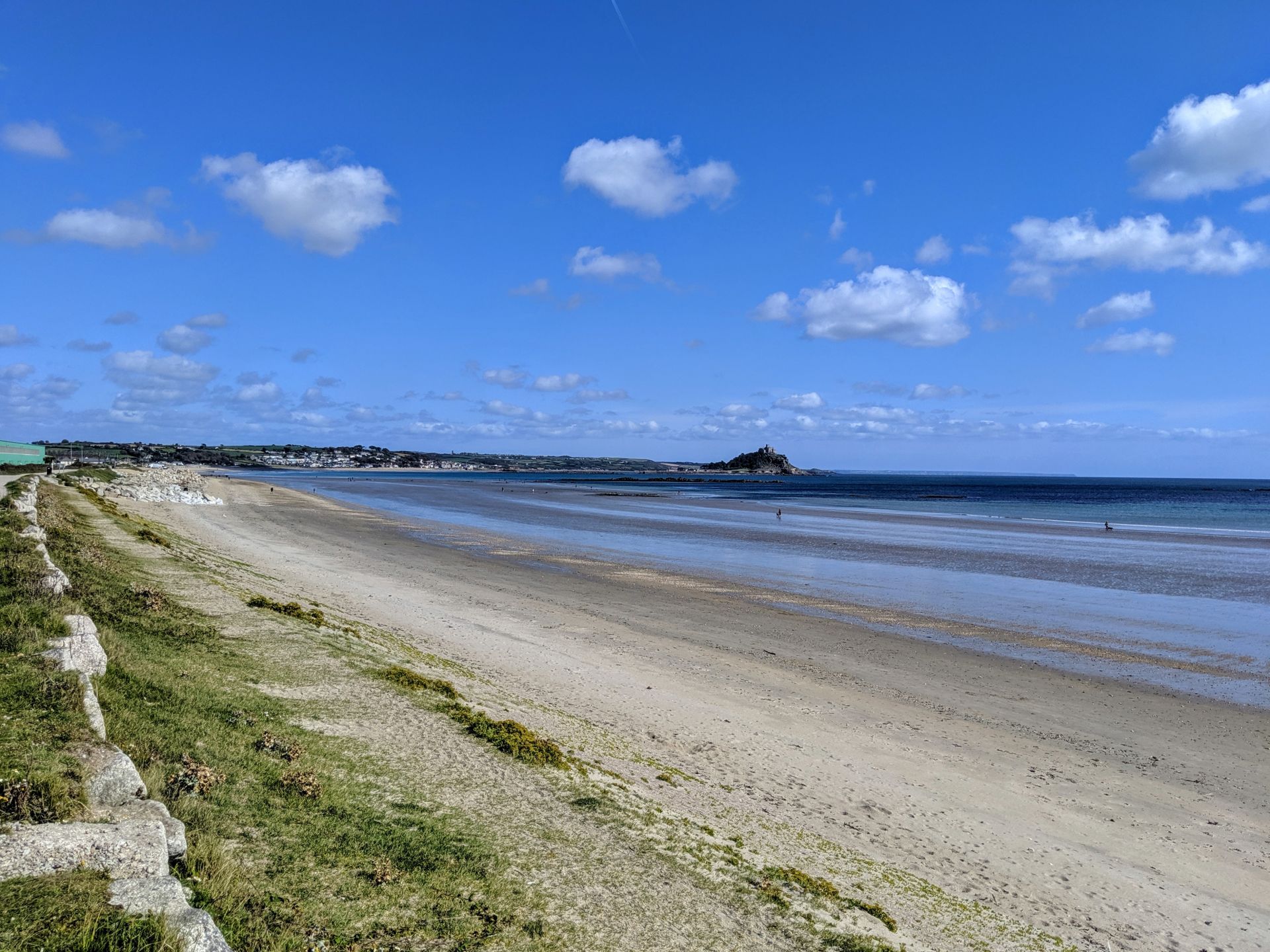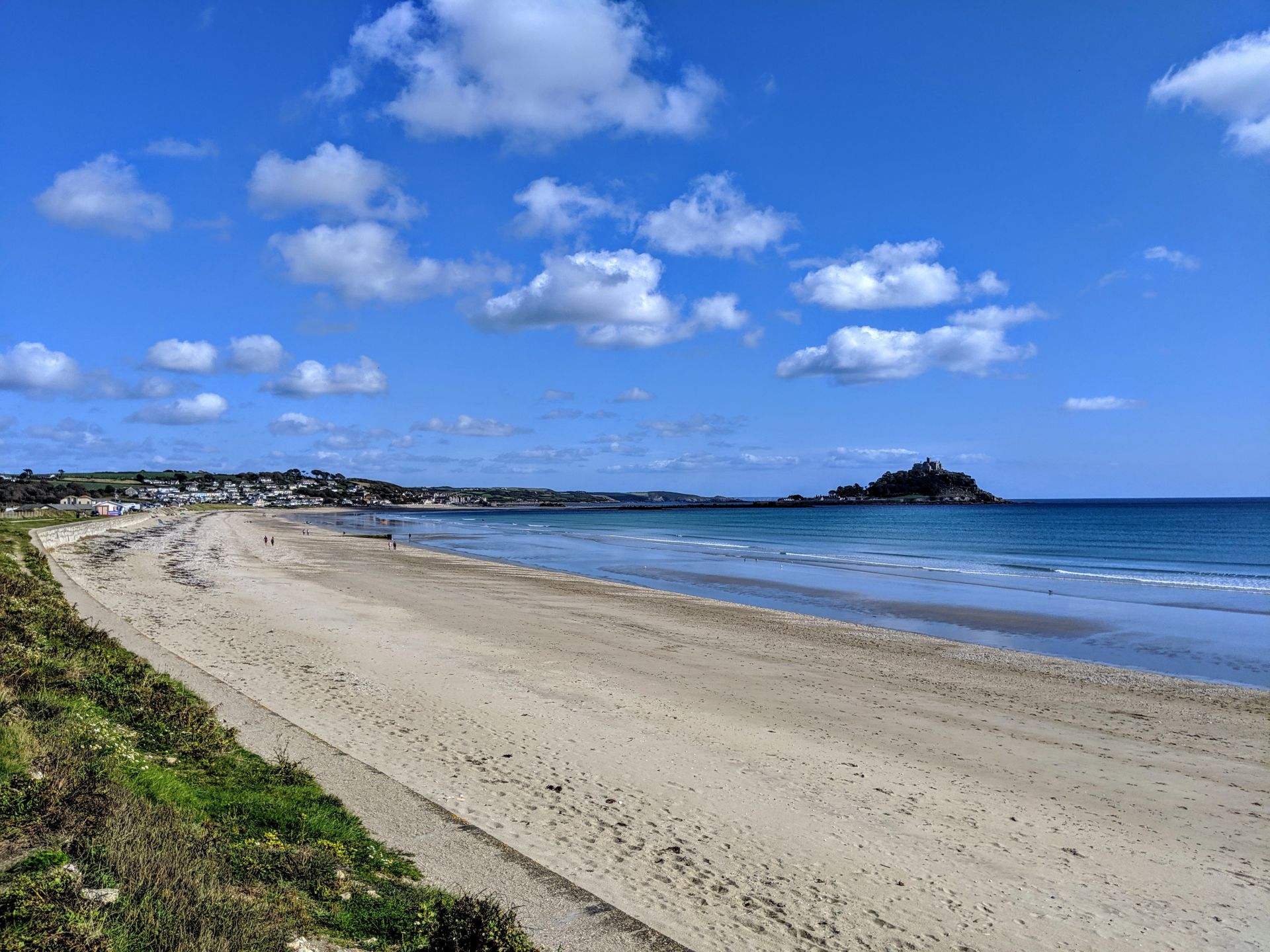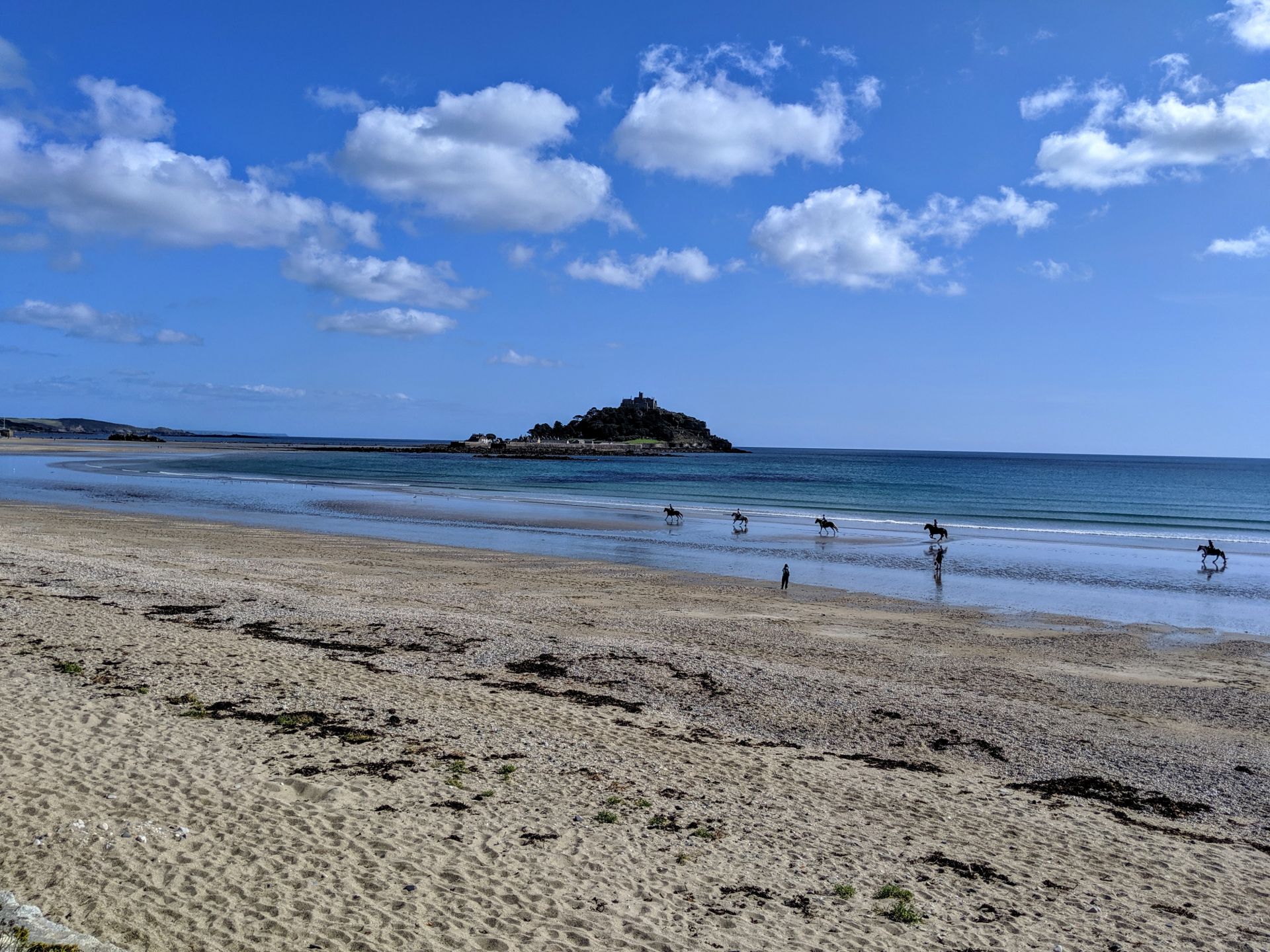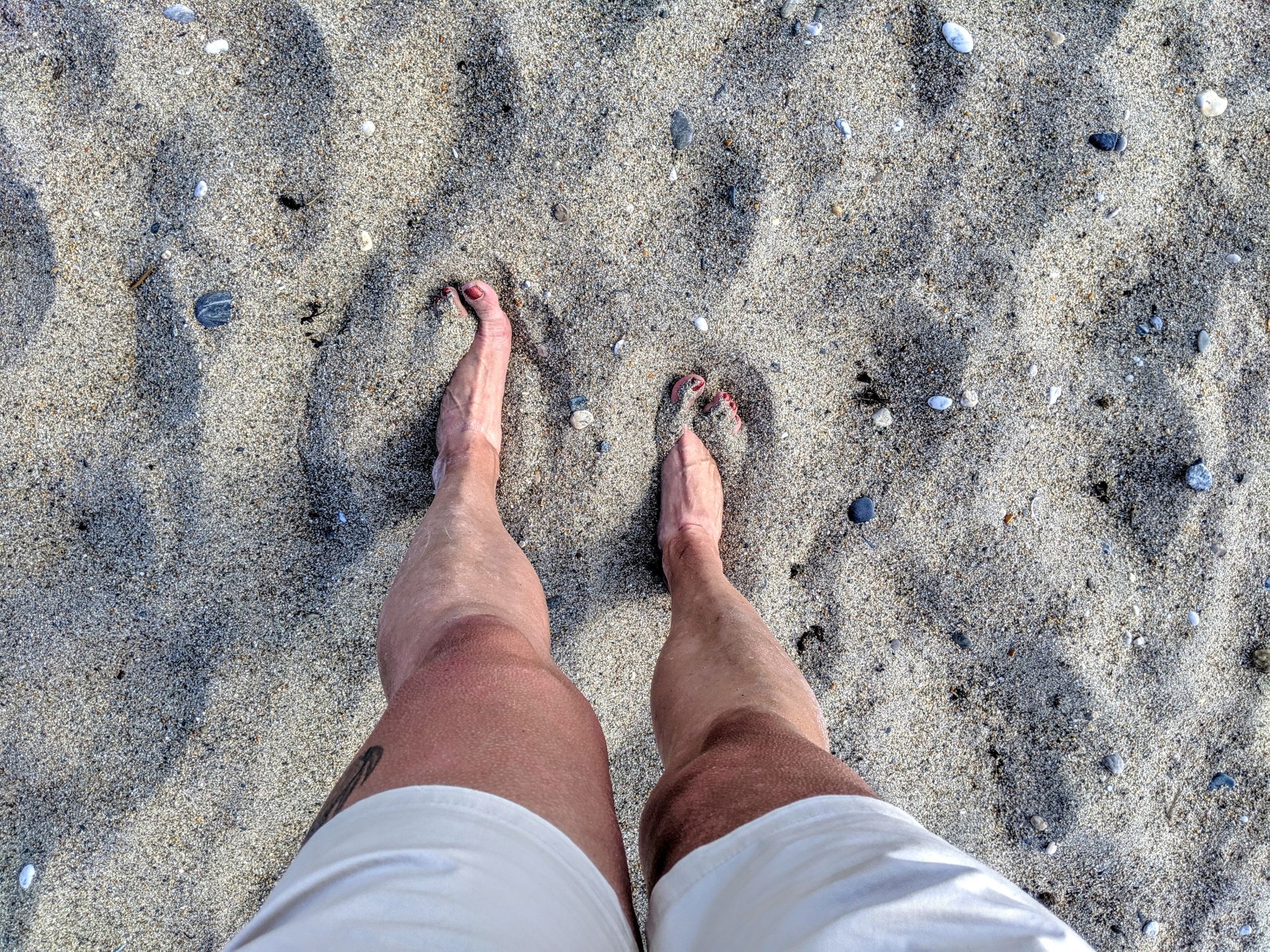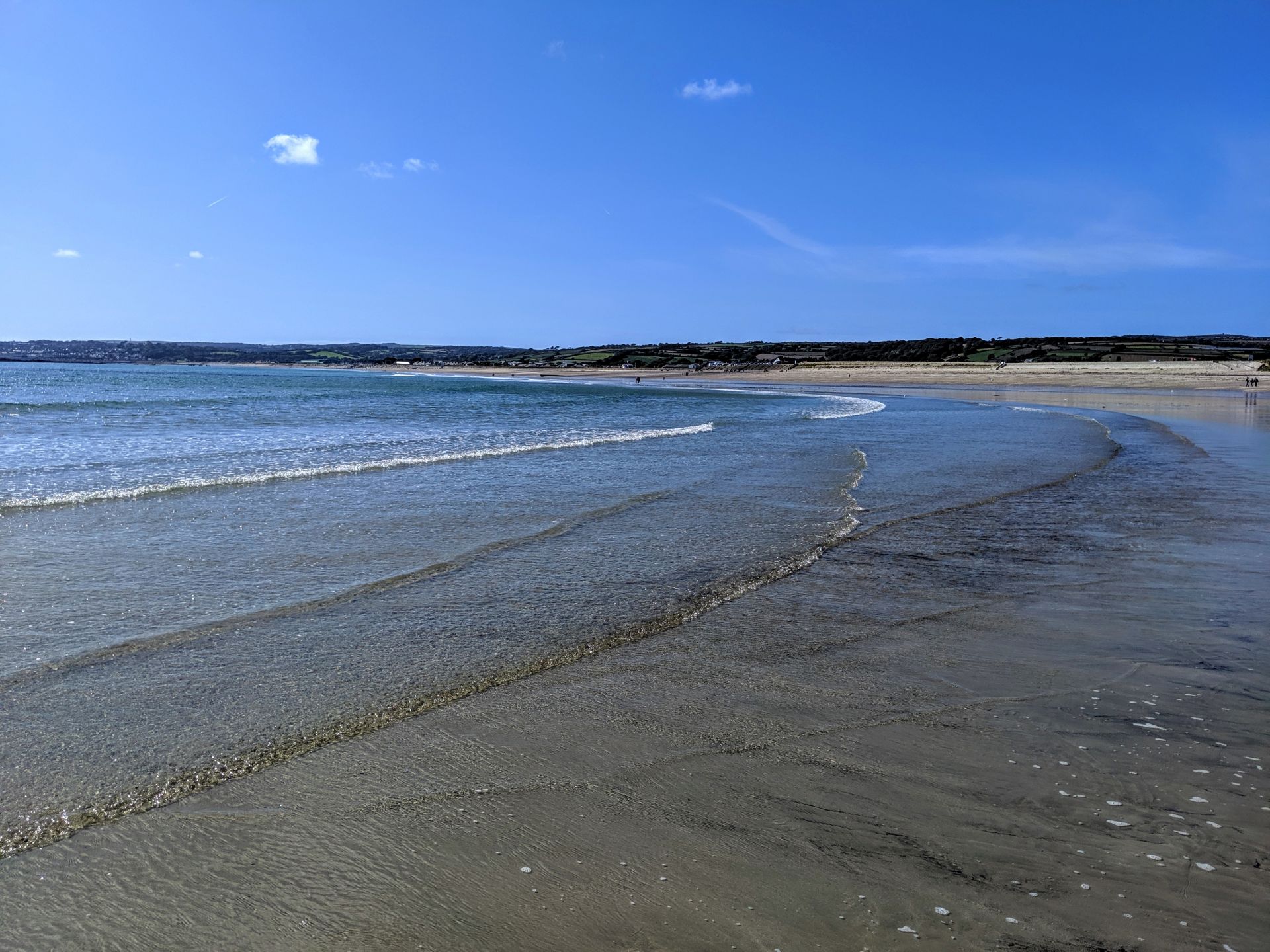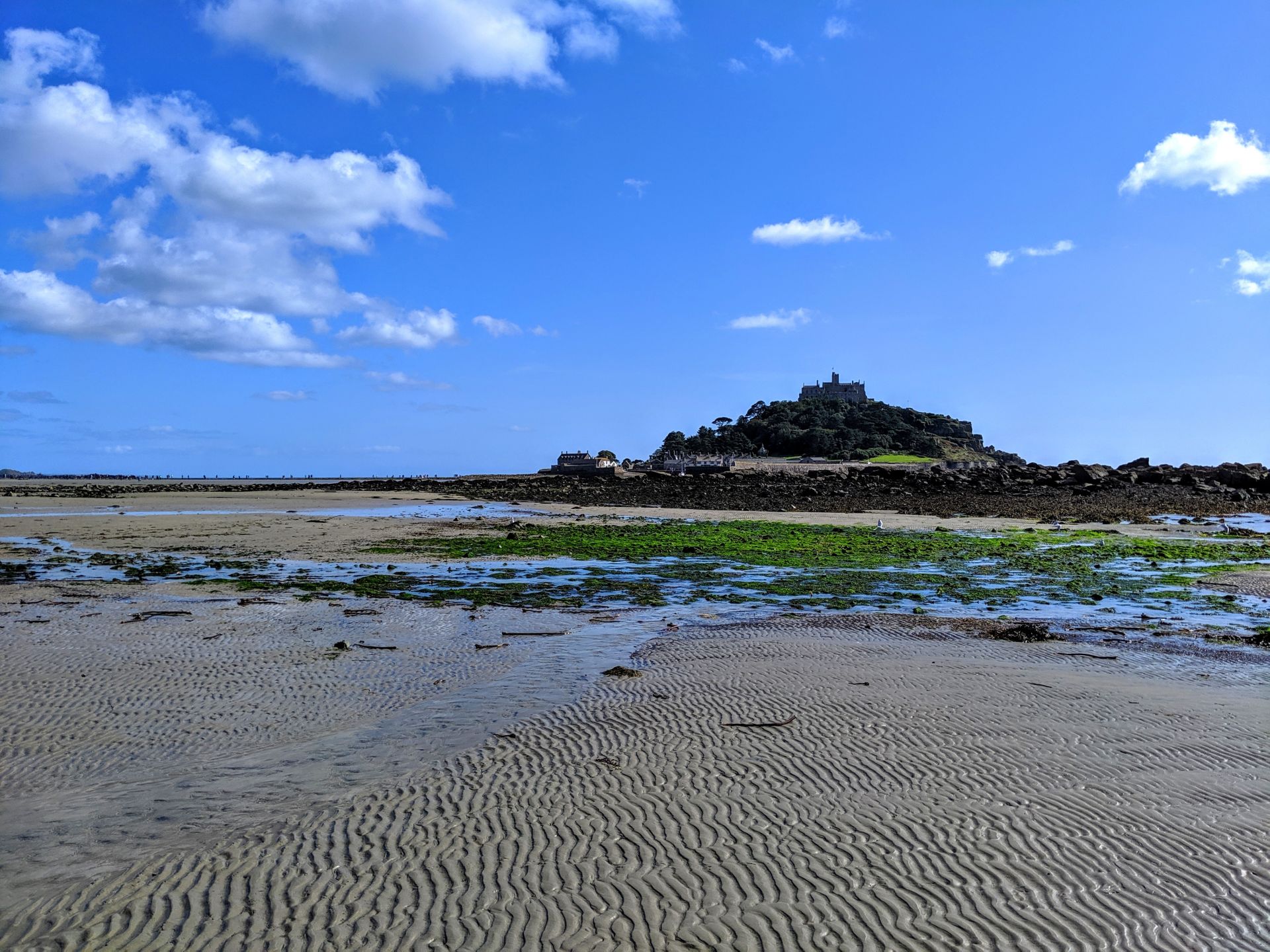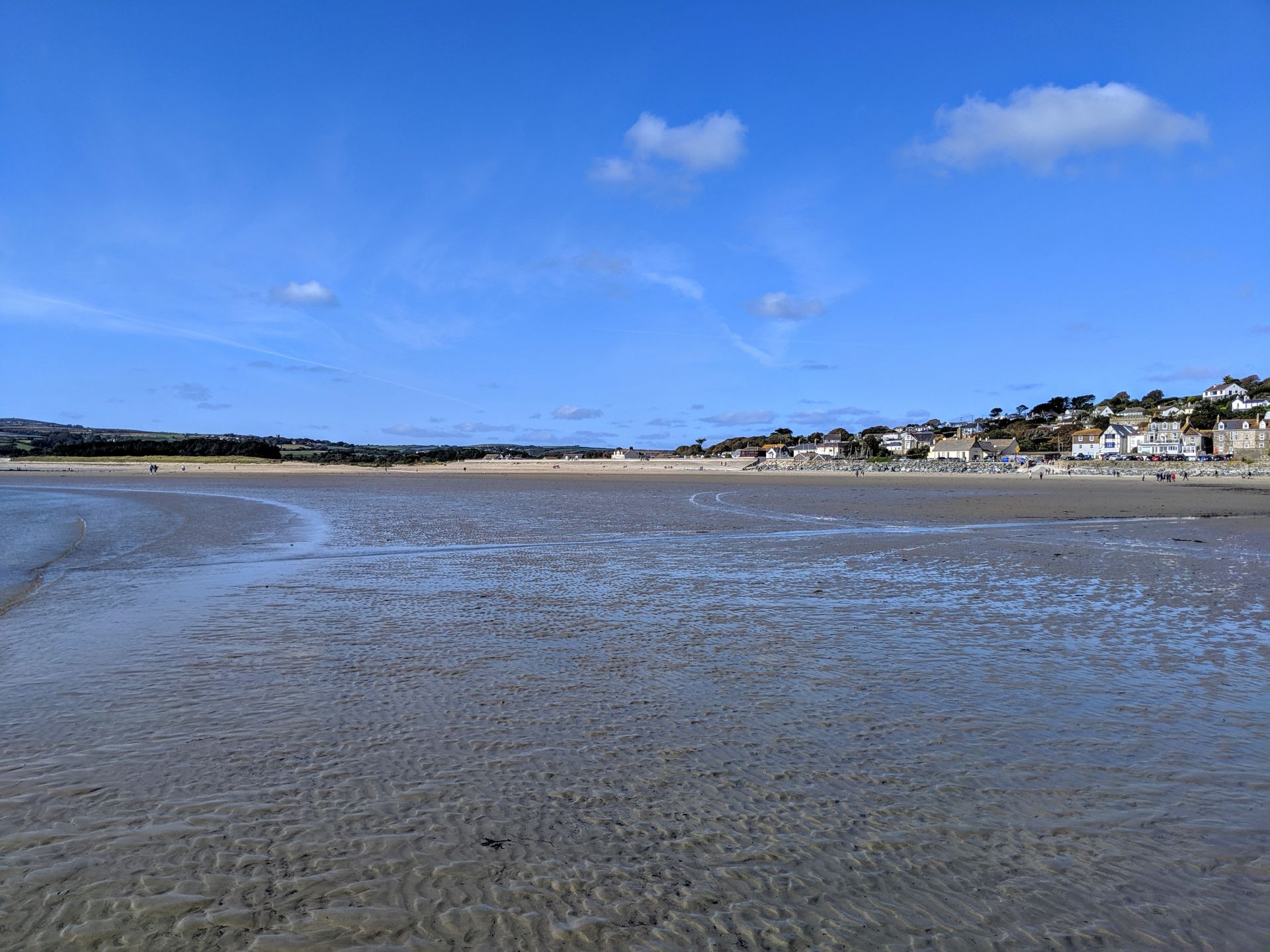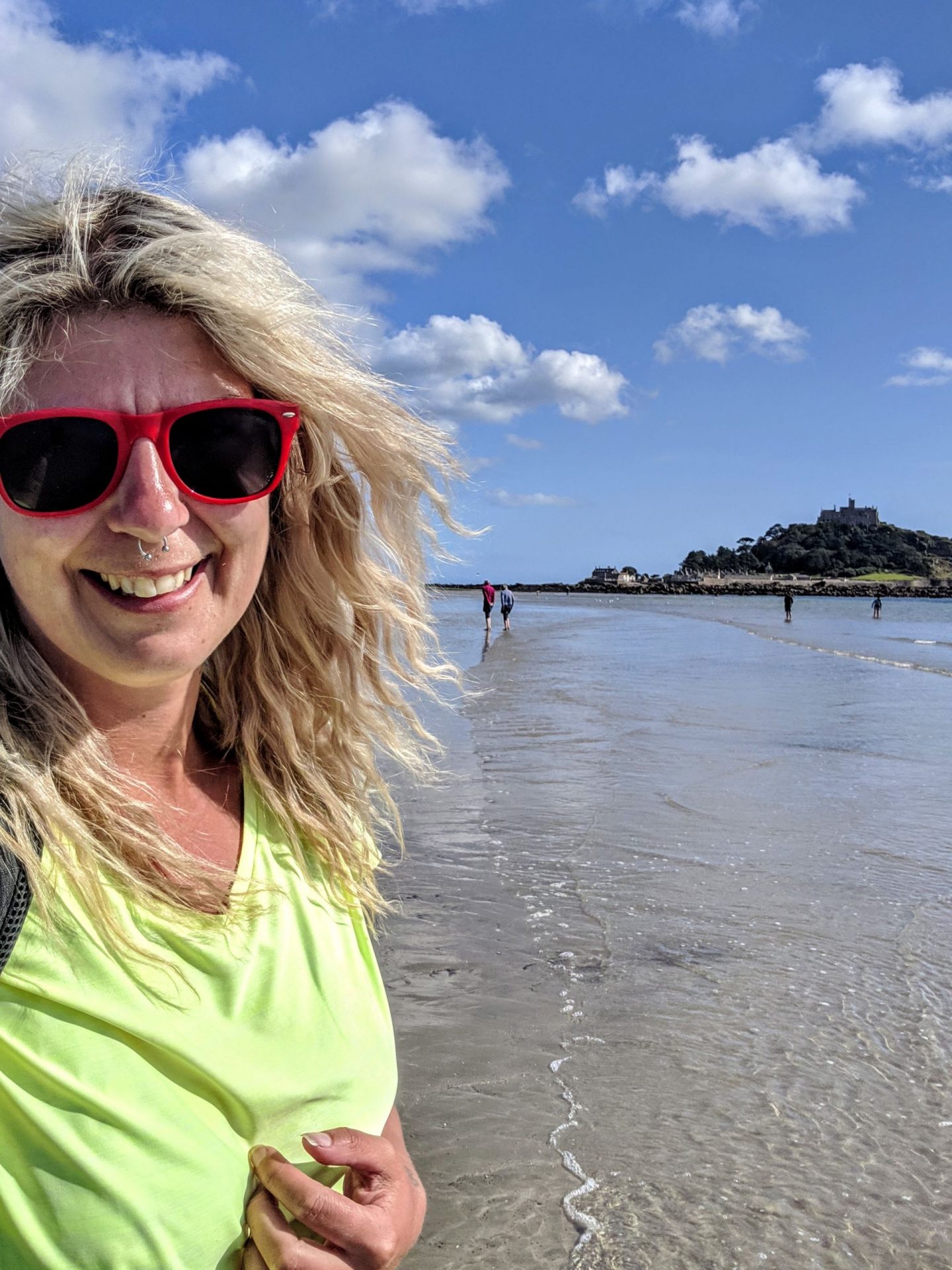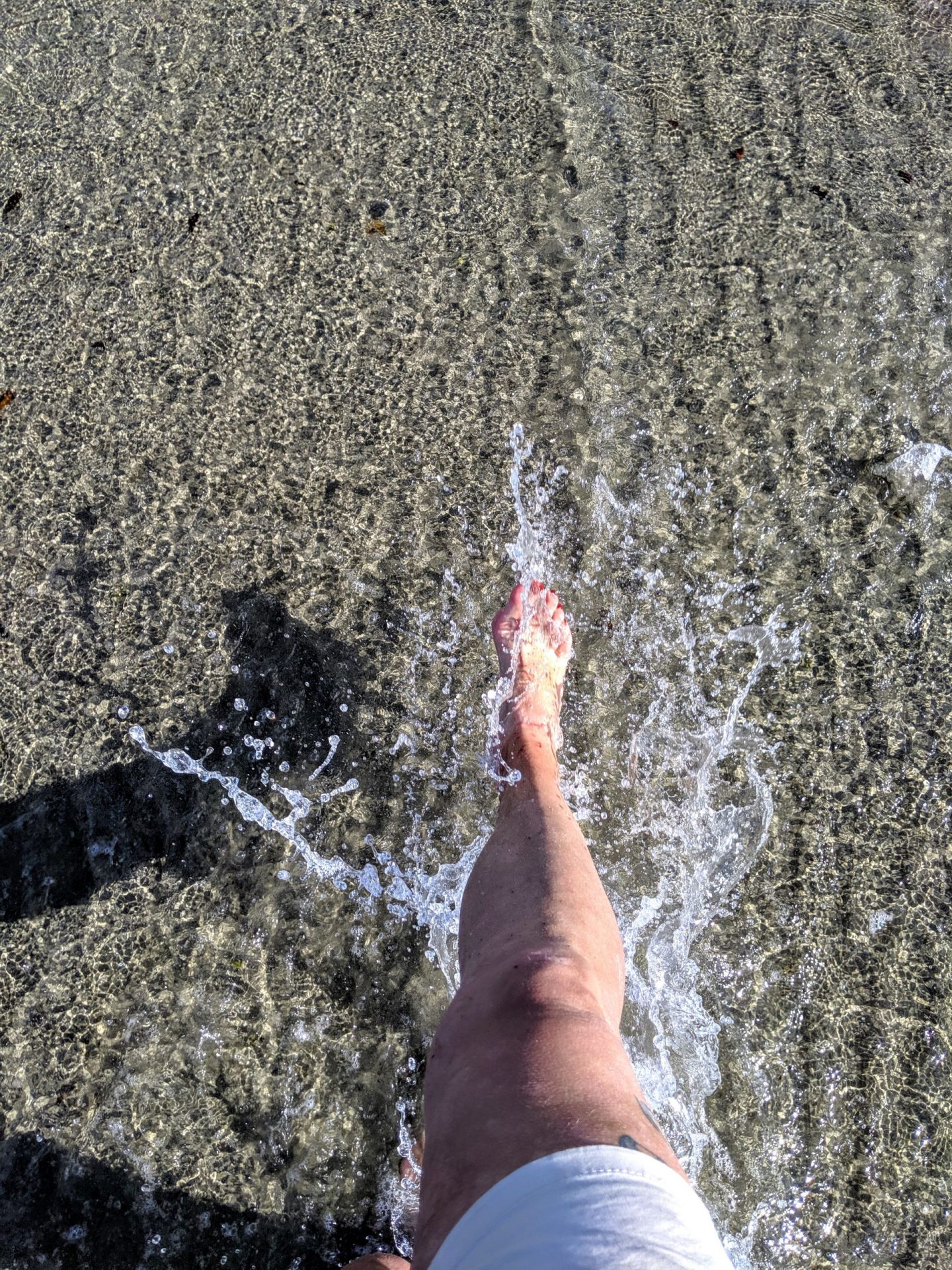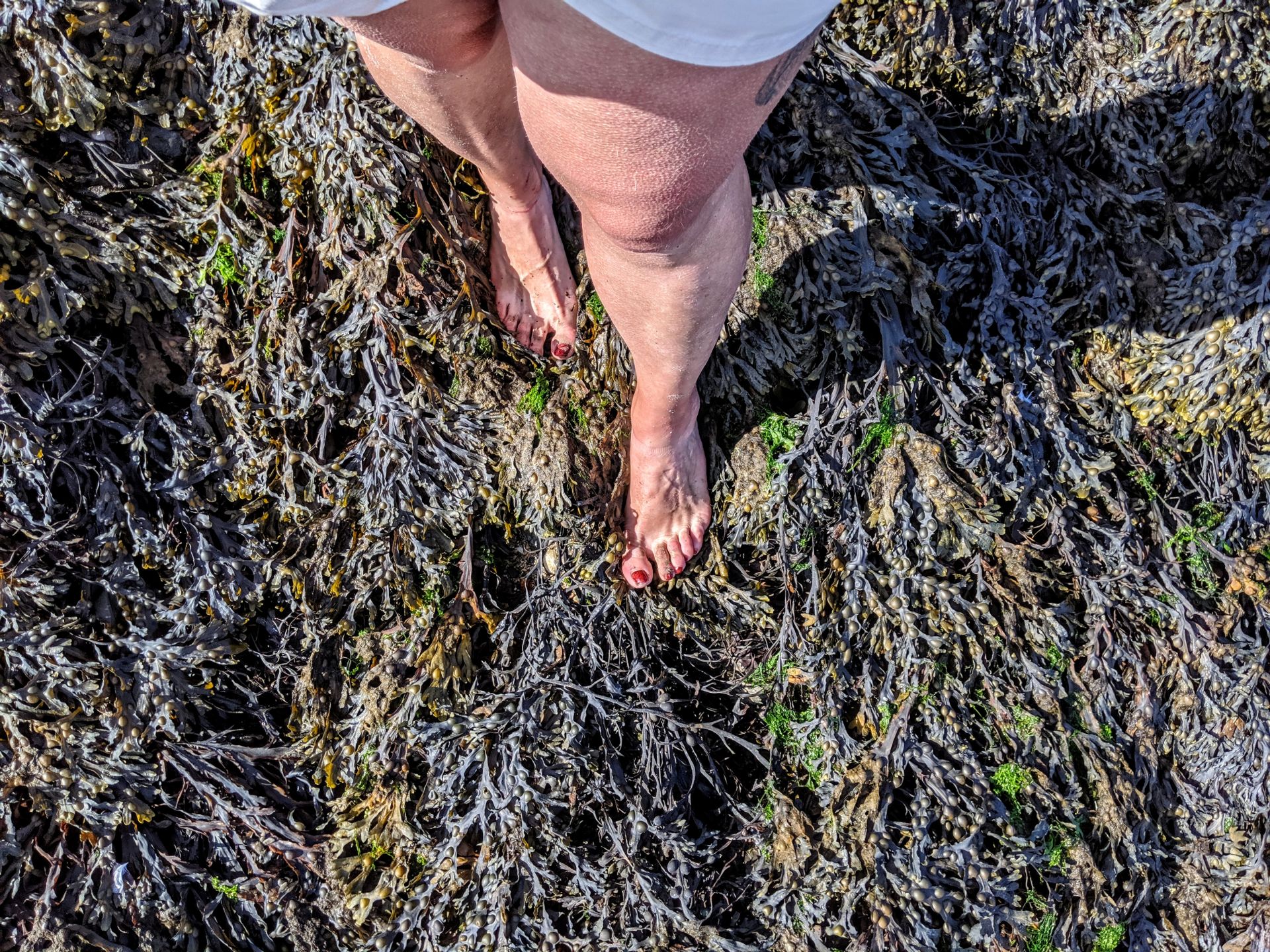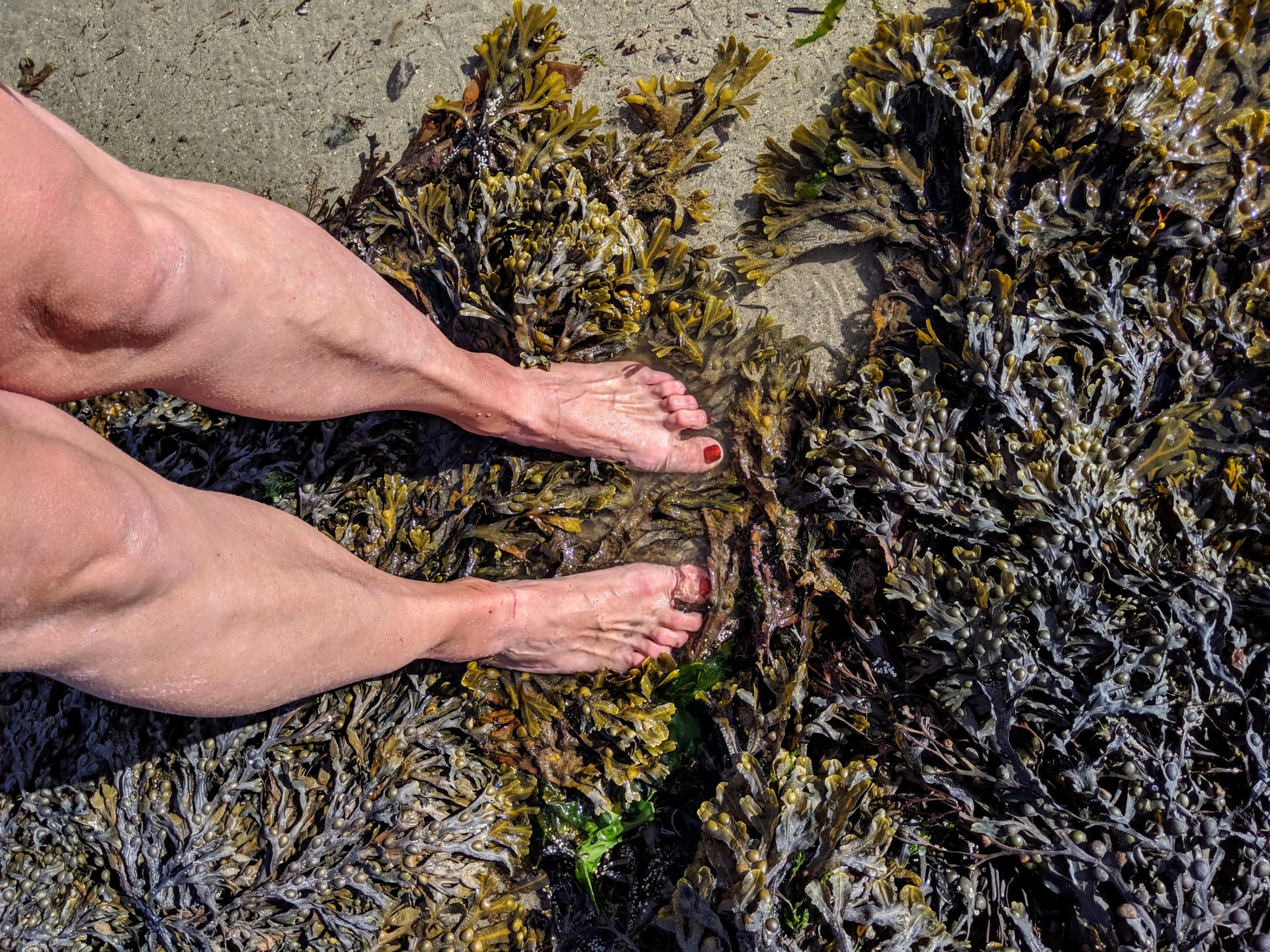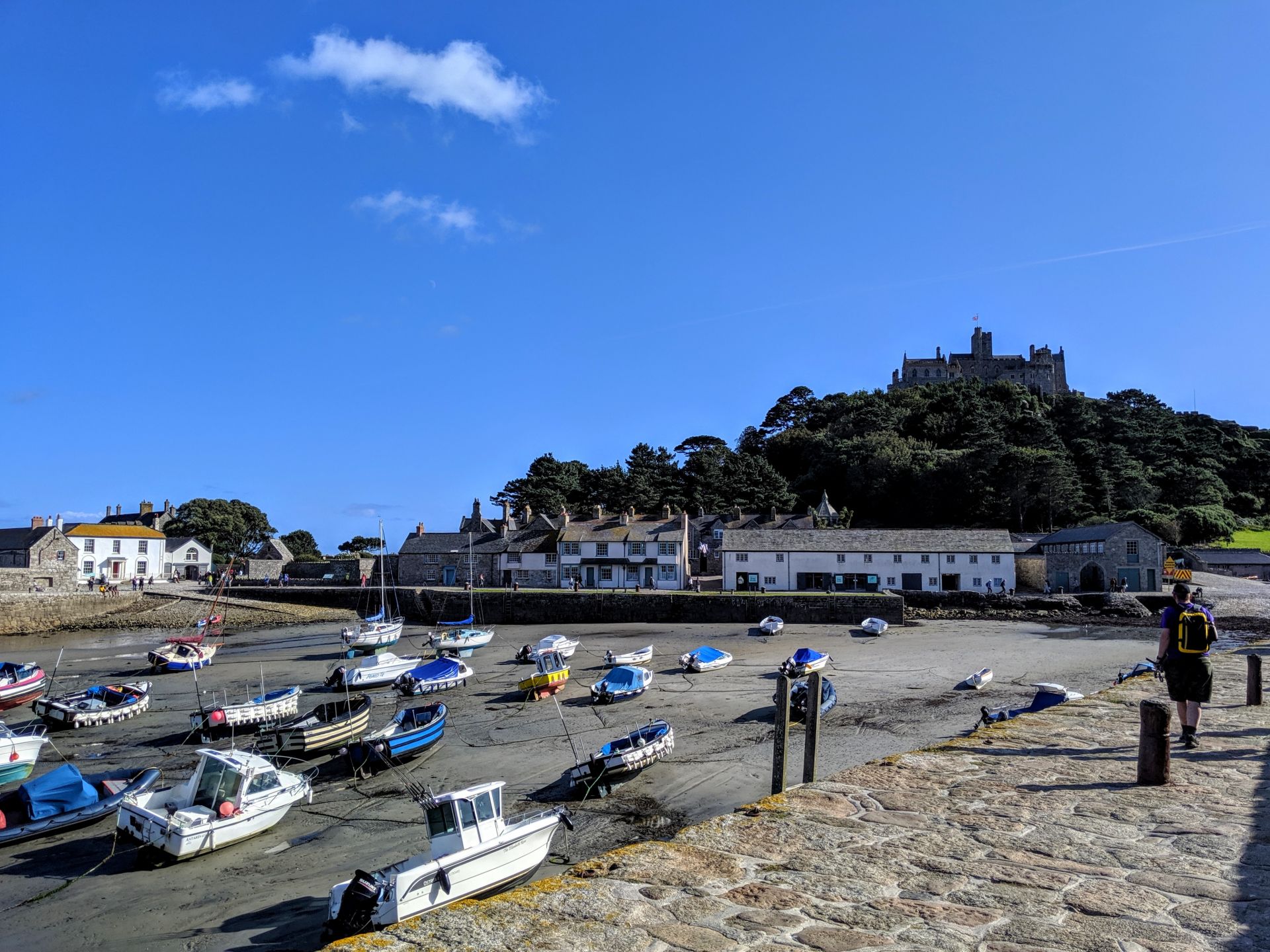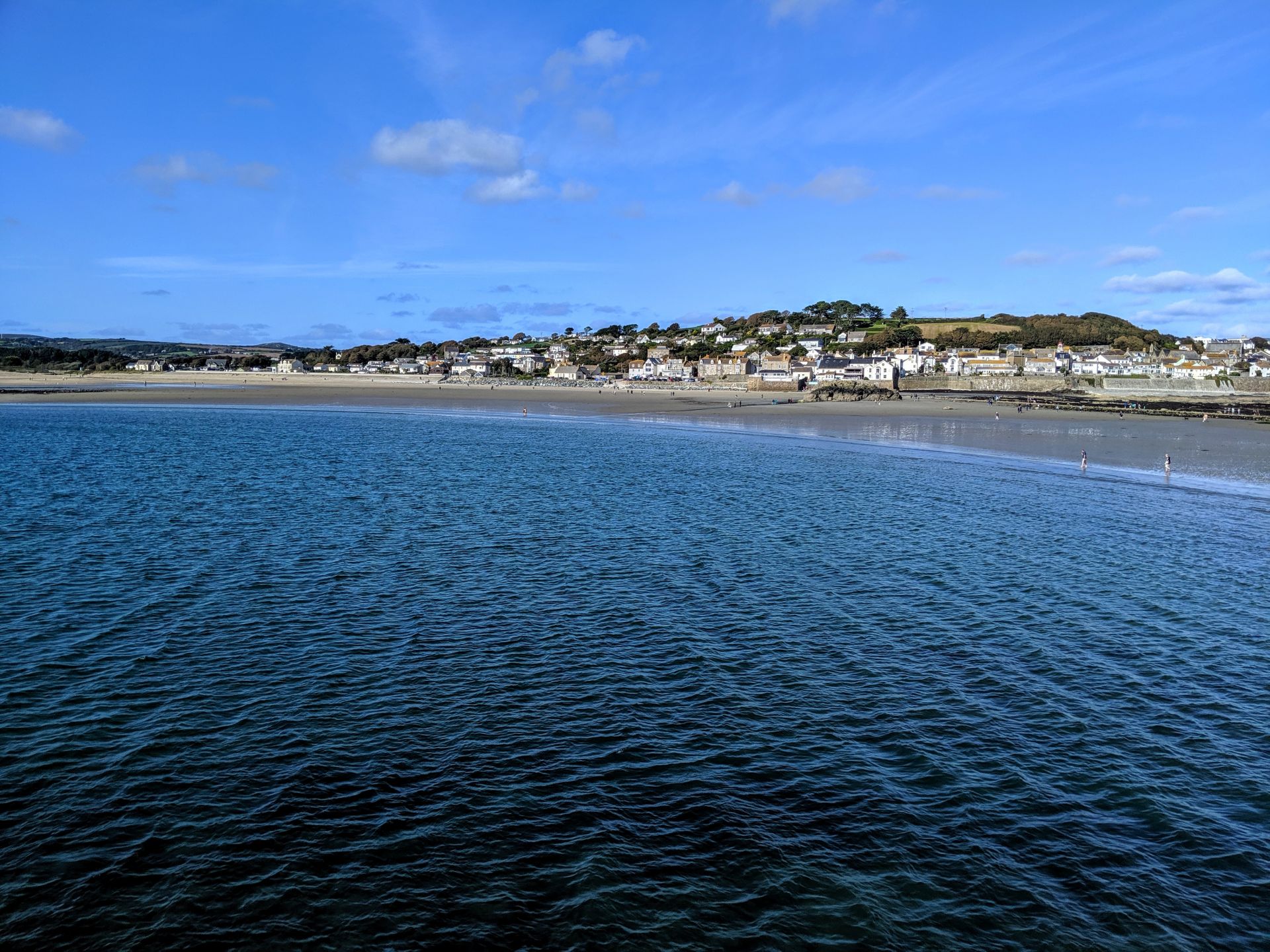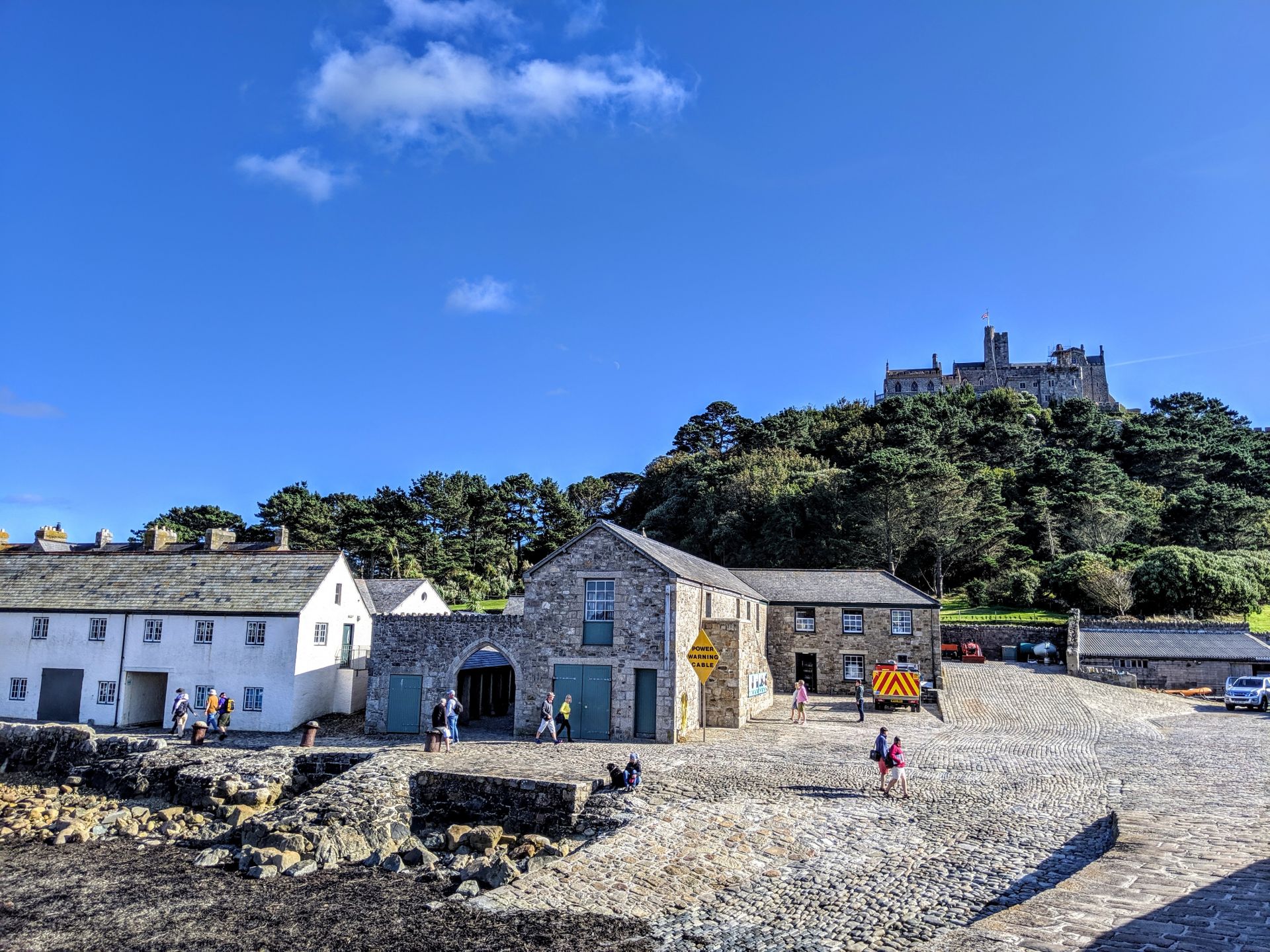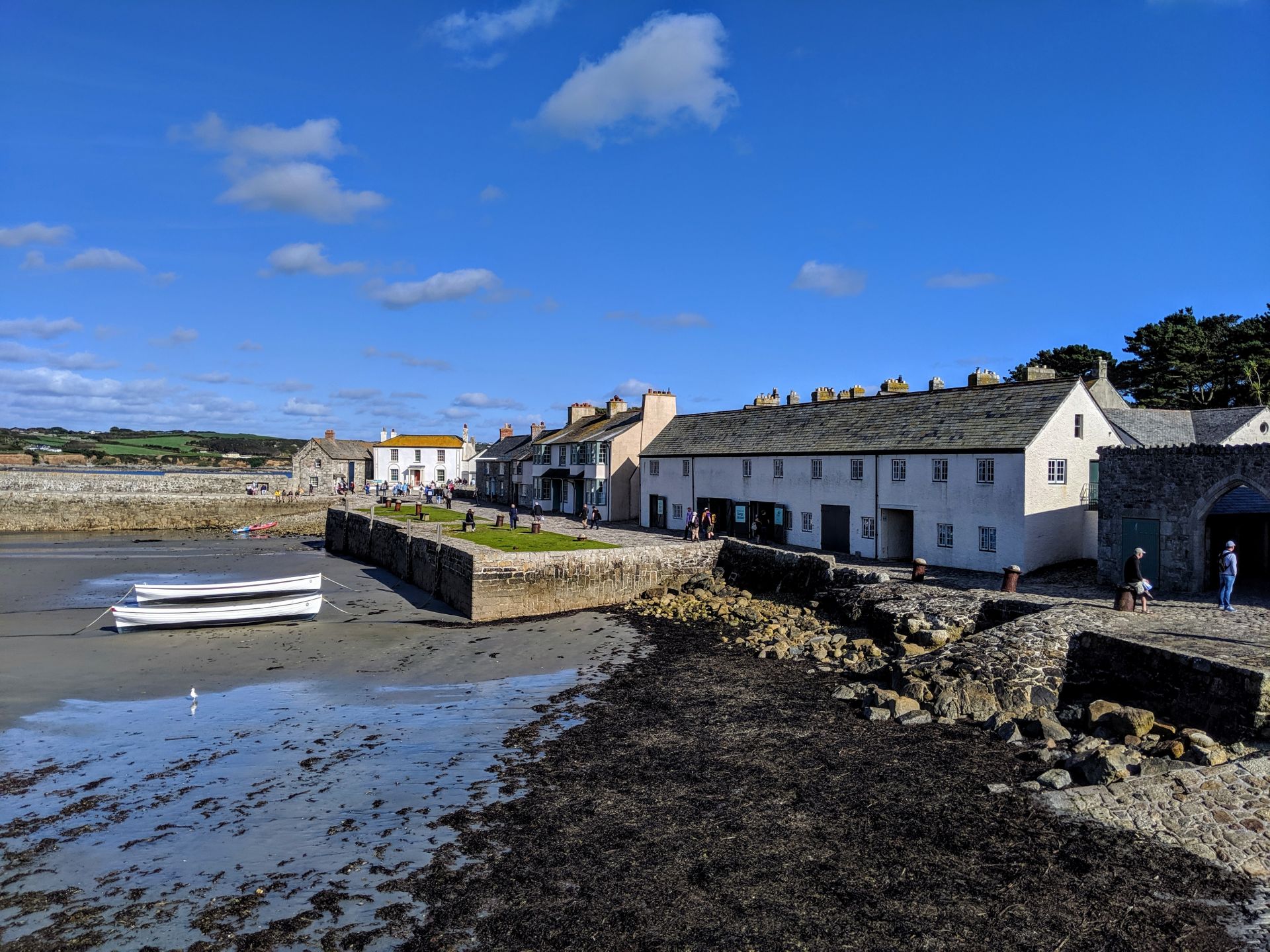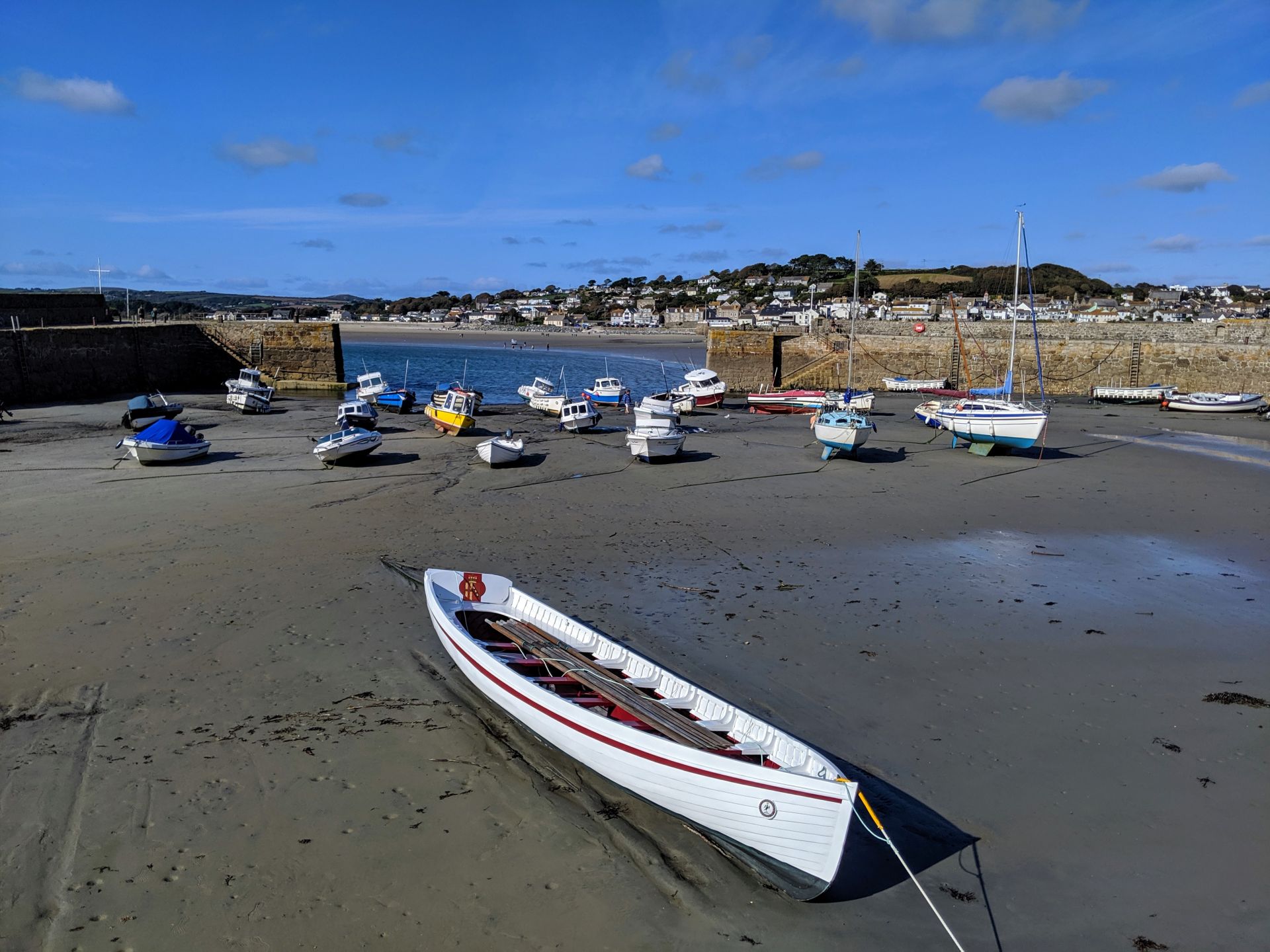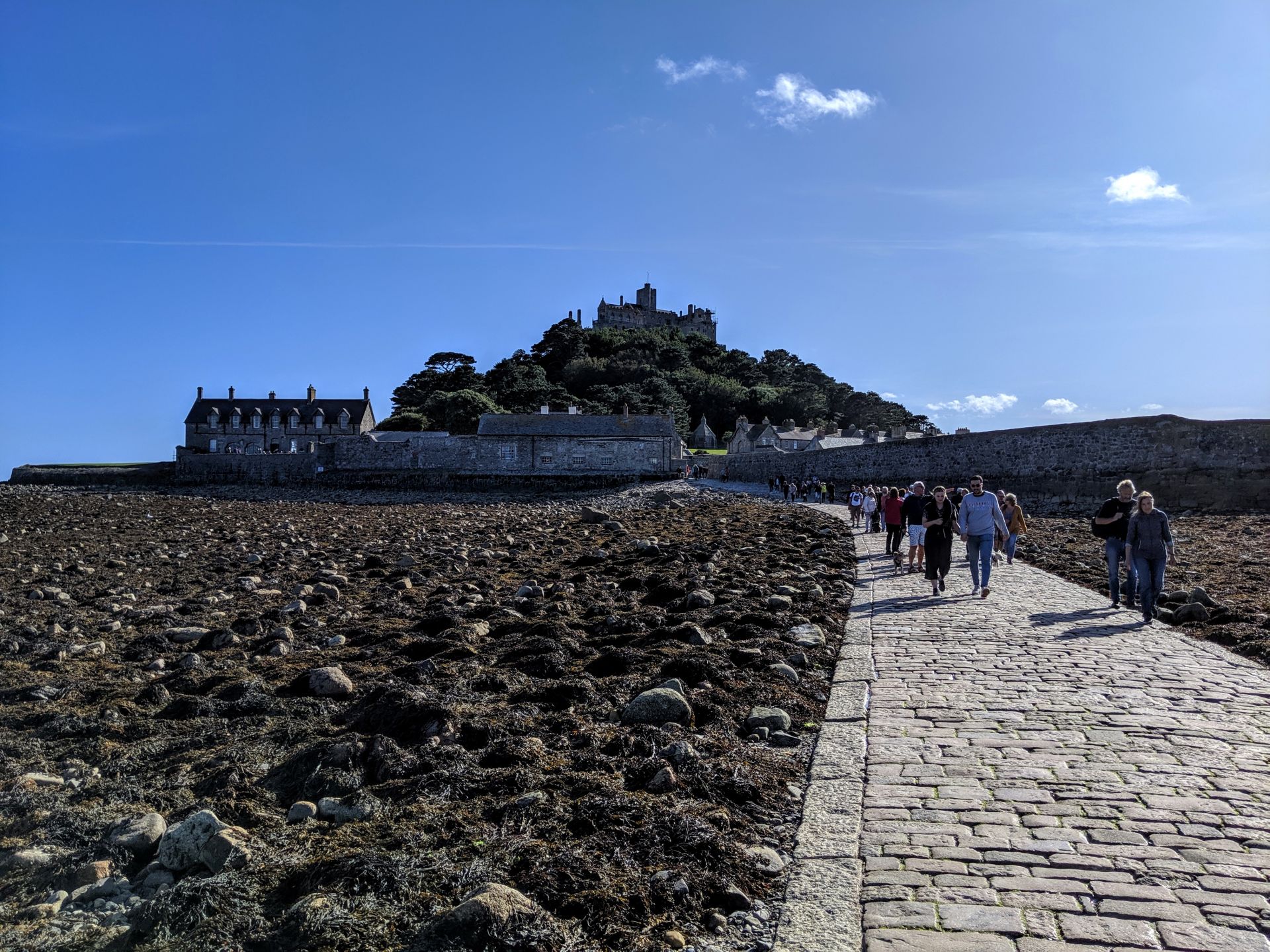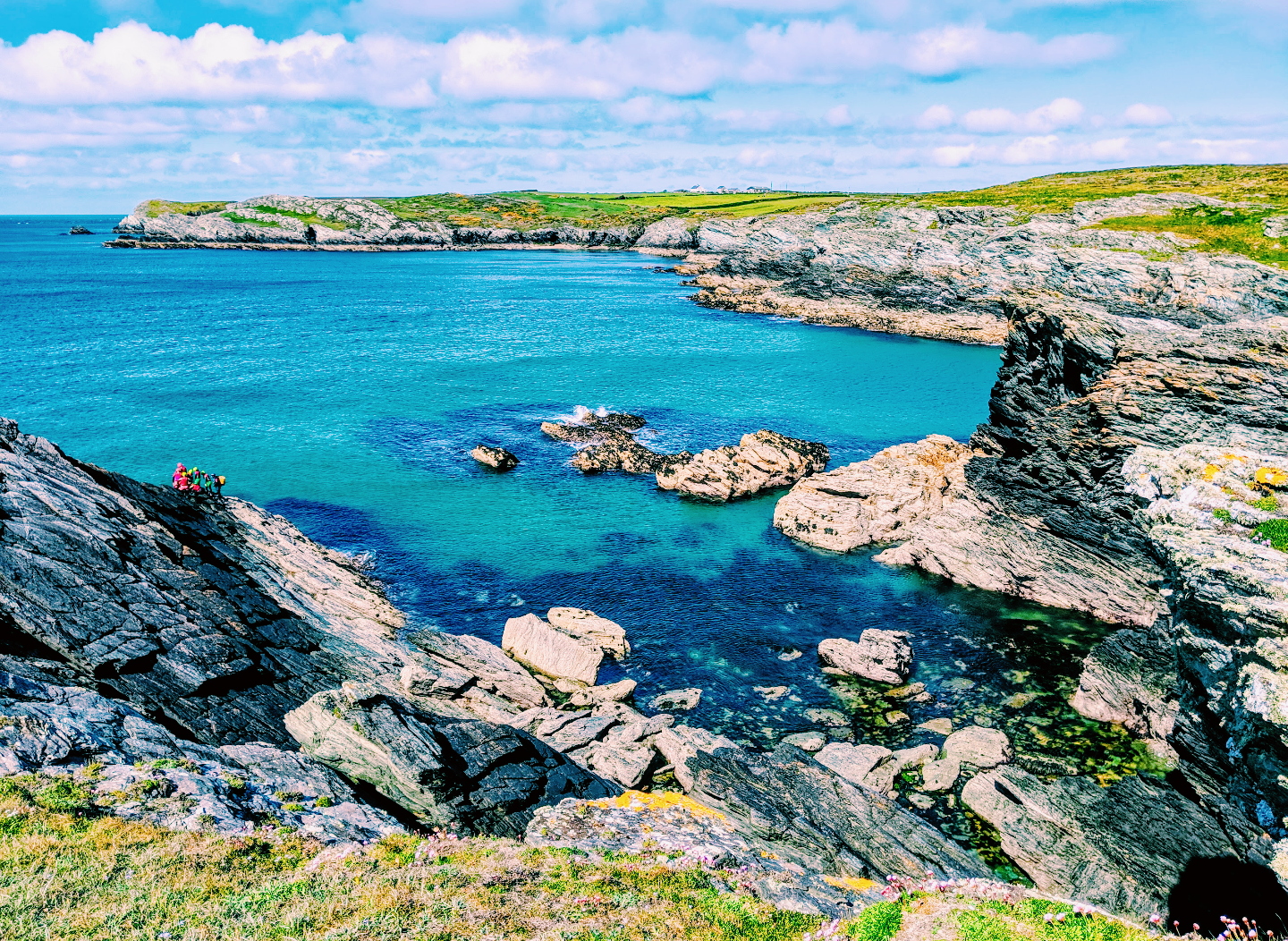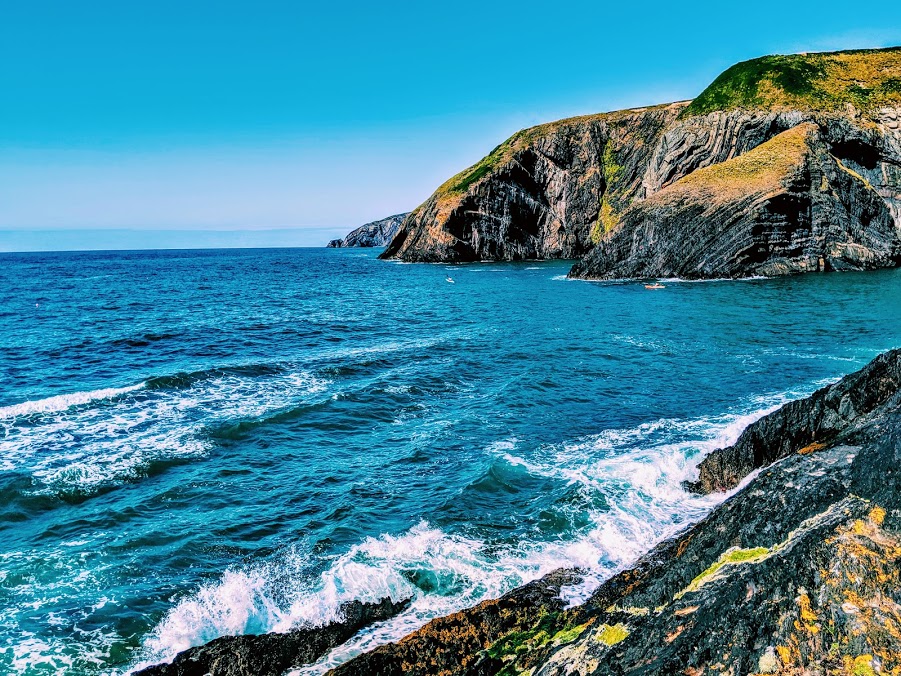“I like to walk, touch living Mother Earth—bare feet best, and thrill every step. Used to envy happy reptiles that had advantage of so much body in contact with earth, bosom to bosom. [We] live with our heels as well as head and most of our pleasure comes in that way.” ~John Muir

You will be happy to know that we are coming to the end of my Cornwall posts and soon into blog posts about Mountain’s, I have so many adventures planned over the winter I can’t wait to share them with you!! So back to today’s post, the first half of the walk can be found here. I was super happy to leave Penzance and the sheer number of people around.
Firstly Penzance has a bona fide promenade extending from the towns famous outside swimming lido …The Jubilee Pool, to the fishing port of Newlyn which is approximately 1.5 miles, past glorious gardens, children’s play area, Skate Park, boating lake and the Tolcarne Inn (great fish dishes). The beach is mainly pebble but the sea is crystal clear in fact seals and dolphins can often be playing here. A further 1.5 miles (pavement and flattish coast path, no steps) will take you to the picturesque harbour village of Mousehole (regular 20 minute busride back if you need it).
Jubilee Pool The pool was opened with great celebration in May 1935, the year of King George V’s Silver Jubilee. Built upon a traditional bathing spot at Battery Rocks near the harbour in Penzance, the structure juts out into the Atlantic. Back in the 1930’s there was a great deal of emphasis on outdoor activities and it’s a classic part of that art deco style, in fact, many seaside towns had similar lido’s but she is the last one of this size left in the UK
Described as one of the most unusual and pleasingly designed lidos of the era, the Jubilee Pool was designed in the early 1930s by Captain F Latham, the Borough Engineer. Cleverly designed to cope with the full ferocity of the Cornish seas, the pool is triangular in shape yet with gentle curved walls, making it a stunning piece of architecture. The pool was a popular amenity for over 50 years but by 1992 the pool had become dilapidated to the extent that its future operation was in doubt. Retired local architect, John Clarke, came to the rescue. He was alarmed when a proposal to build a copper coloured pyramid structure over the pool was mooted.
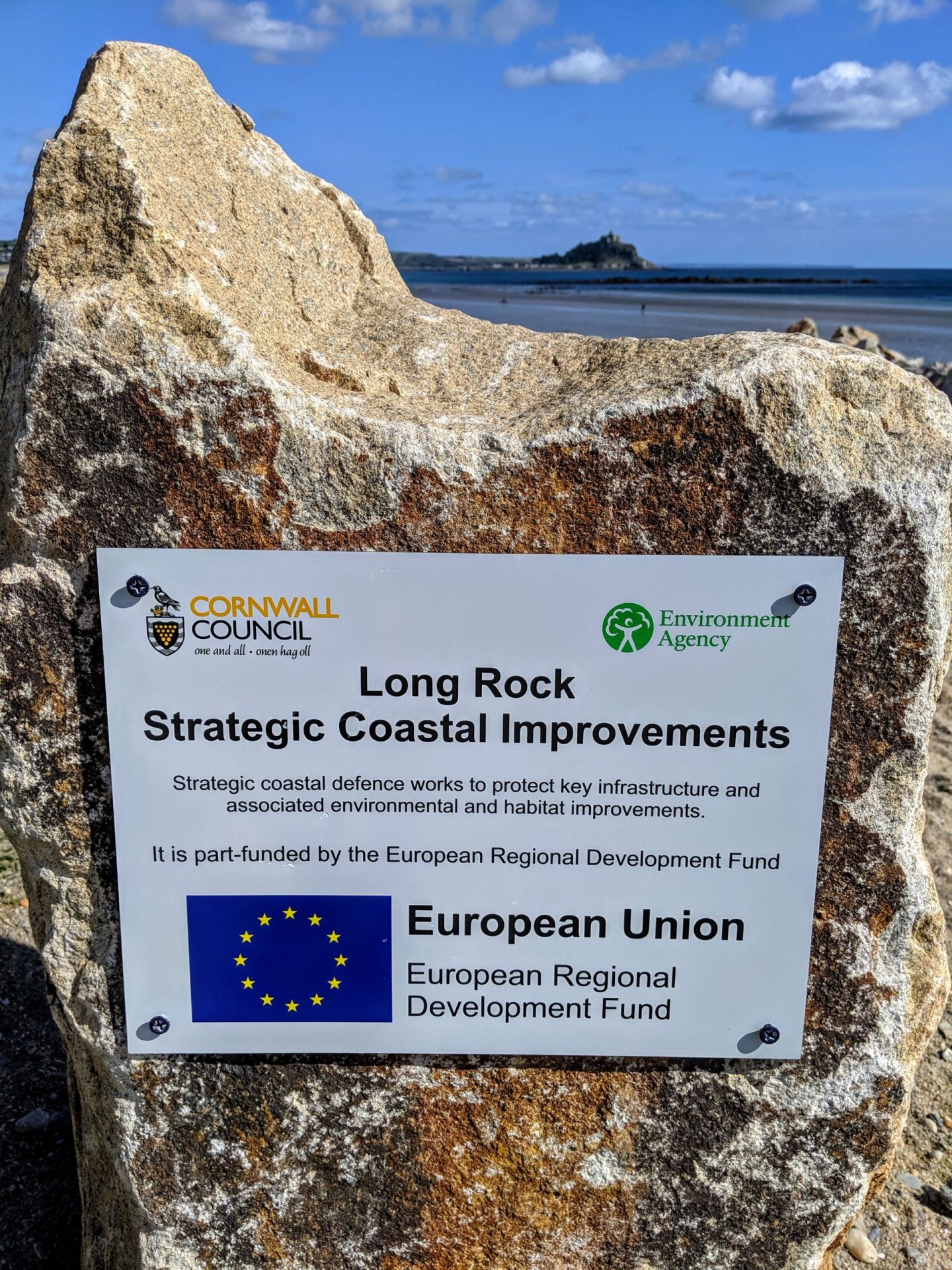
In case you wondered what the EU did for us!!
Highlights from the official website for the Southwest Coast Path
- Stunning views of the majestic St Michael’s Mount. Once a Benedictine Priory, a fortress and tin mining port, it can be accessed by a causeway at low tide or by ferry.
- Birds of Marazion Marsh: this important breeding and overwintering site has Cornwall’s largest reedbed and is used by the rare Cetti’s warbler, bitterns, chiffchaffs, starlings and little egrets. The Reserve has been designated a Site of Special Scientific Interest and there are regular guided walks in the summer months.
- The ancient market town of Marazion, with its very active community of painters and potters. There has been a settlement here since 308BC and the town claims to be the oldest in Britain, and could be the settlement known to the Romans as Ictis.
Although only the size of a village Marazion is in fact one of the oldest chartered towns in Cornwall. The first charter of incorporation was granted by Henry III in 1257 and was reaffirmed on 13th June 1595 by Queen Elizabeth I.
The old name for Marazion was Marghas Yow, which means ‘Thursday Market’. The town was indeed an important place for trade with evidence back to the Bronze age that Phonecians visited the early settlement of Marazion to buy ingots of locally mined tin.
Marazion is perhaps best known for being the gateway to the impressive island castle of St Michael’s Mount. This beautiful, magical and historical landmark is now in the care of the National Trust, with the St. Aubyn family still resident. The Mount can be reached at low tide from Marazion by a cobbled causeway and at high tide by local ferry boatmen.
At low tide, the causeway appears from the sea and you can reach St Michael’s Mount by foot, following in the footsteps of giants and pilgrims. Setting out from the beachfront at the Godolphin Arms, it takes just minutes to walk across the ancient cobble causeway which stretches from the mainland to the island. Please use our handy causeway search to look up when the causeway will be open on the day of your visit.
When the tide floods in, our boatmen will ferry you across the water to the island. At high tide during spring, summer and autumn, frequent motorboats leave from landing points along the shore at Marazion for the Mount’s ancient harbour.
Once upon a time the Mount sat in a dense forest that spread far and wide. To this day, at low tides the remains of ancient tree stumps are sometimes revealed. In those days it is said that the giant Cormoran and his wife, Cormelian, lived on the mount. Tragedy struck though when another giant, Trecobben, accidentally killed Cormoran’s wife when he threw a cobbling hammer. Shortly after Trecobben died from the grief of what he had done.

It seems that Cormoran had slightly less conscience and was the bane of the folk in the surrounding lands. He would regularly help himself to whatever he fancied be it a herd of cows or field of crops. Deciding enough was enough, a young lad named Jack snook over to the mount and dug a giant-sized pit at the bottom of the hillside whilst the giant slept. Jack then blew his horn waking Cormoran who in a rage came thundering down the hill. The giant went headlong into the pit and that was the end of him. And that is the tale of Jack the Giant Killer. Whilst there are no tales of St Michael’s Mount being haunted by actual giants there have been sightings of a particularly tall man. This seems to relate to an unusual find during renovation work of the chapel on the Mount in the late 19th century. During work on the chapel a small stone doorway was discovered in the south wall. Beyond this was a flight of steps leading to a small hermitage cell within which were laid the bones of a man measuring 7 feet 8 inches. It is believed the man was an anchorite (a type of hermit) and his cell became a hidden tomb after his death.

